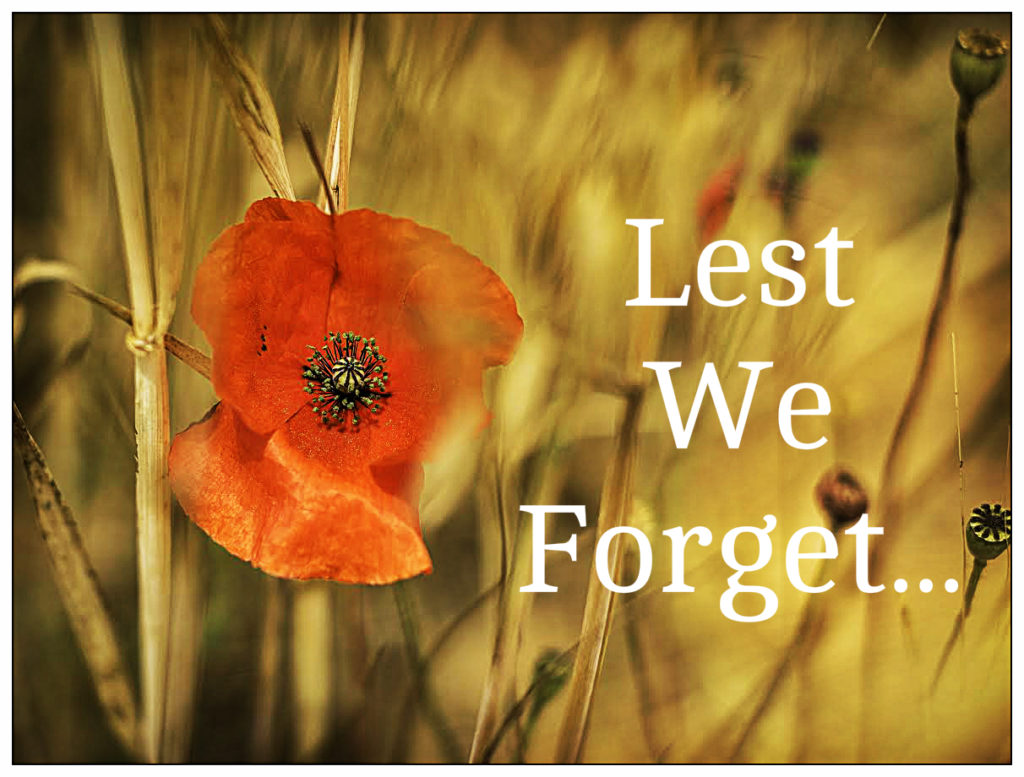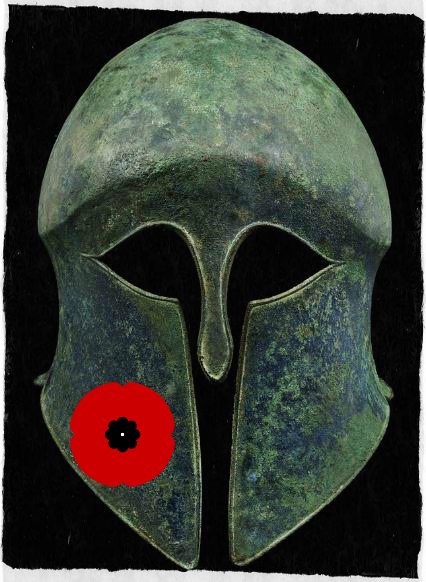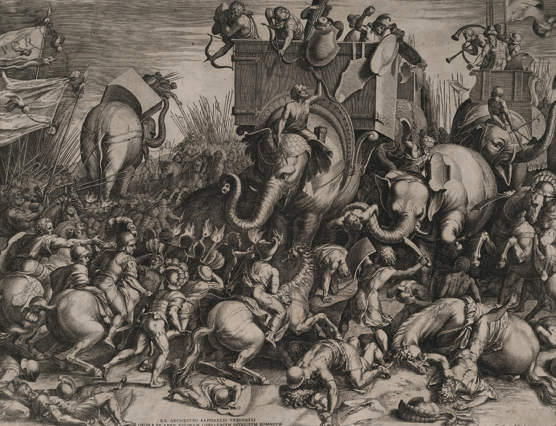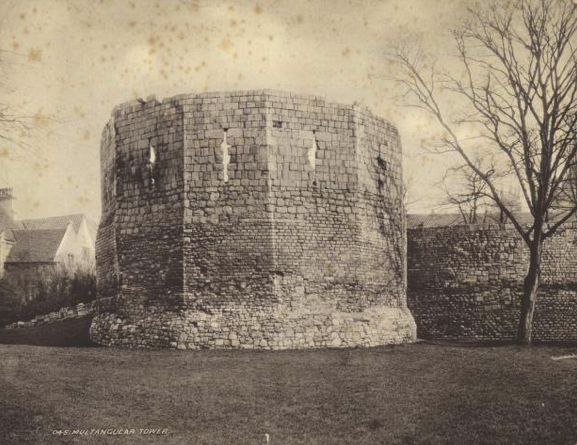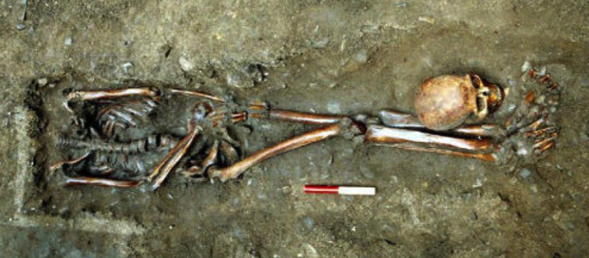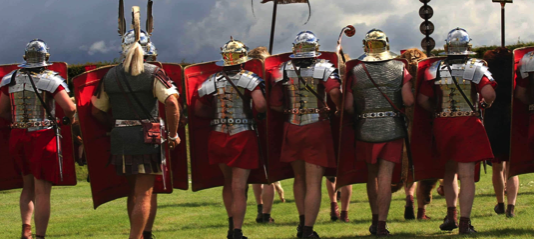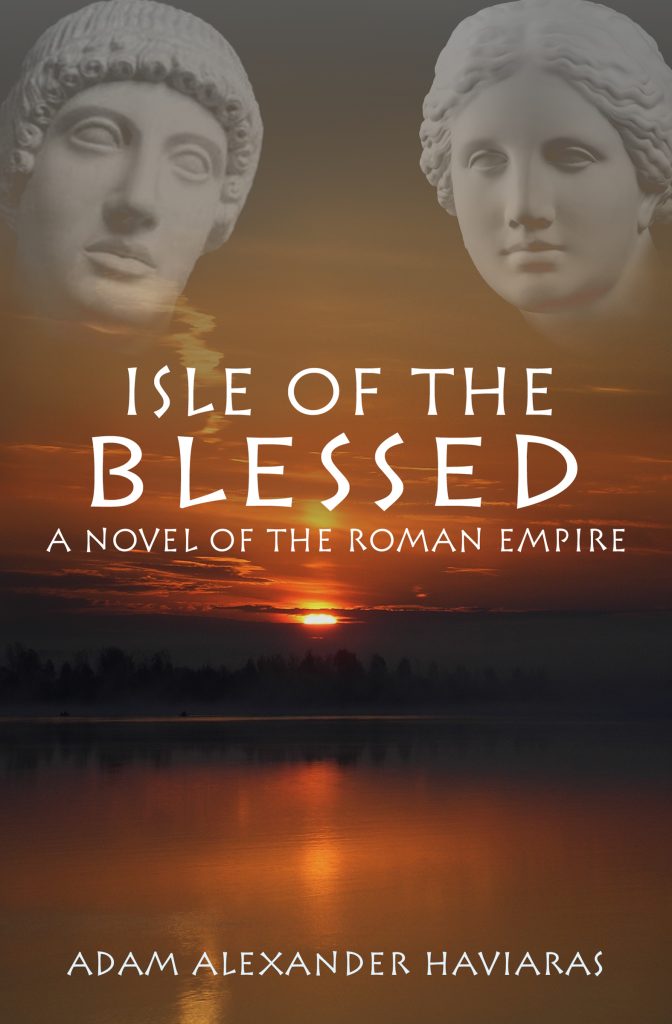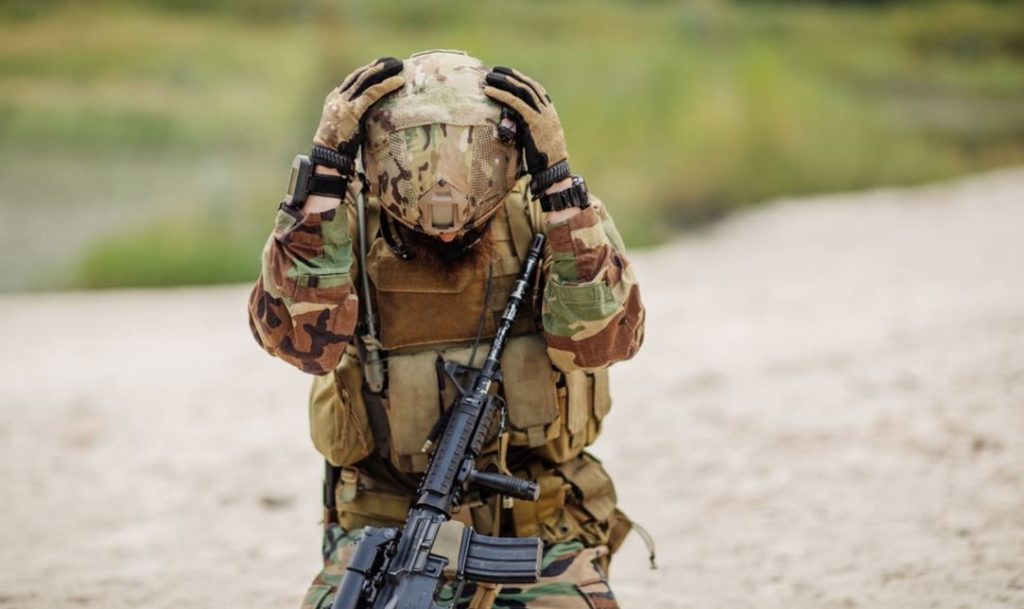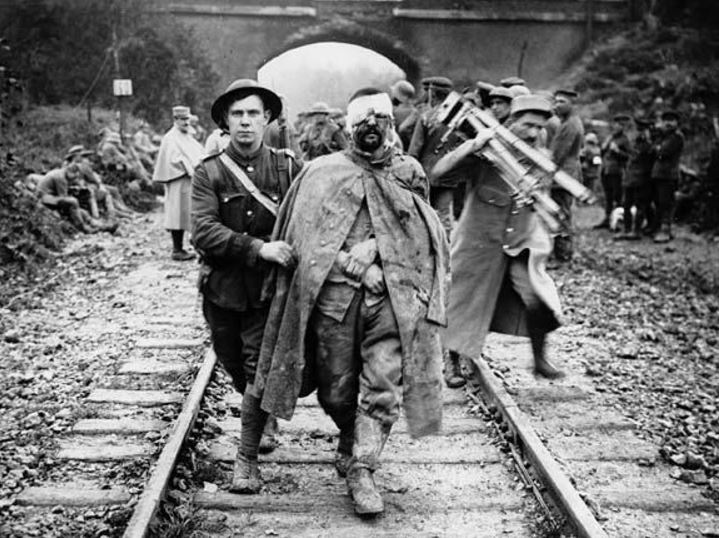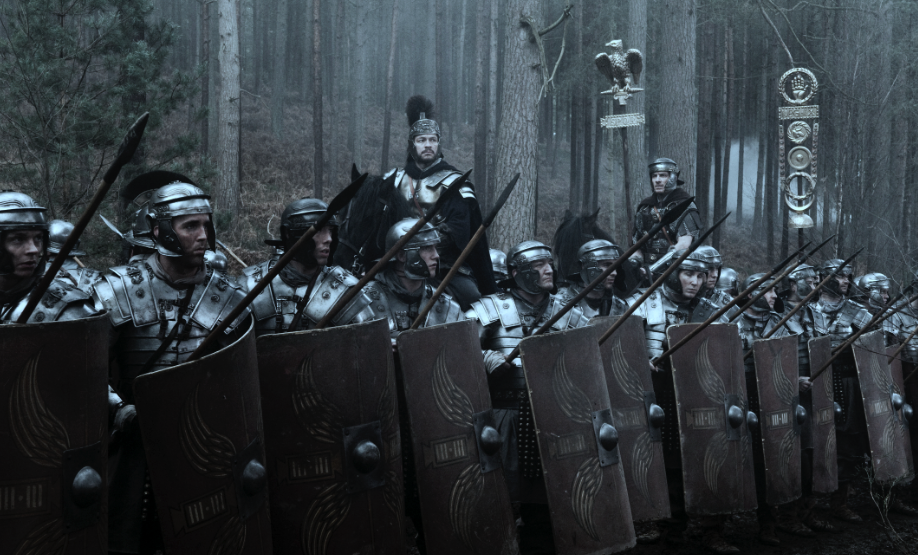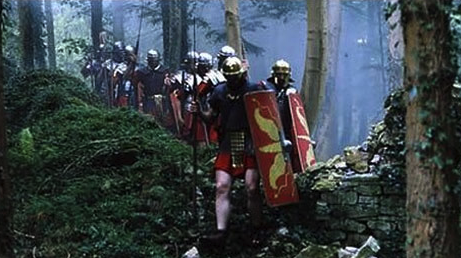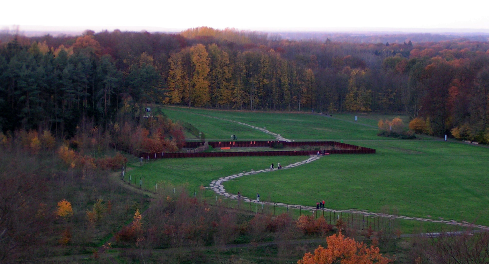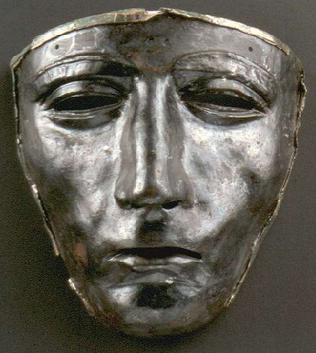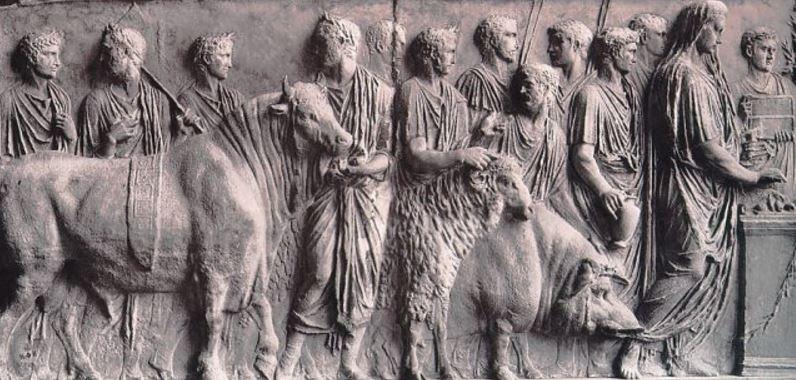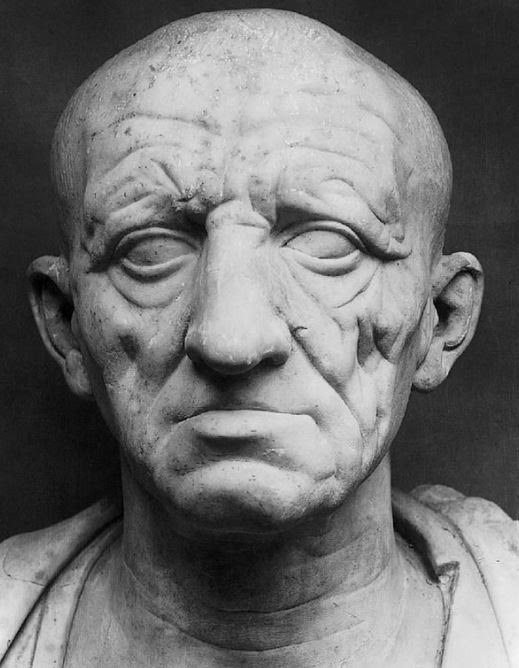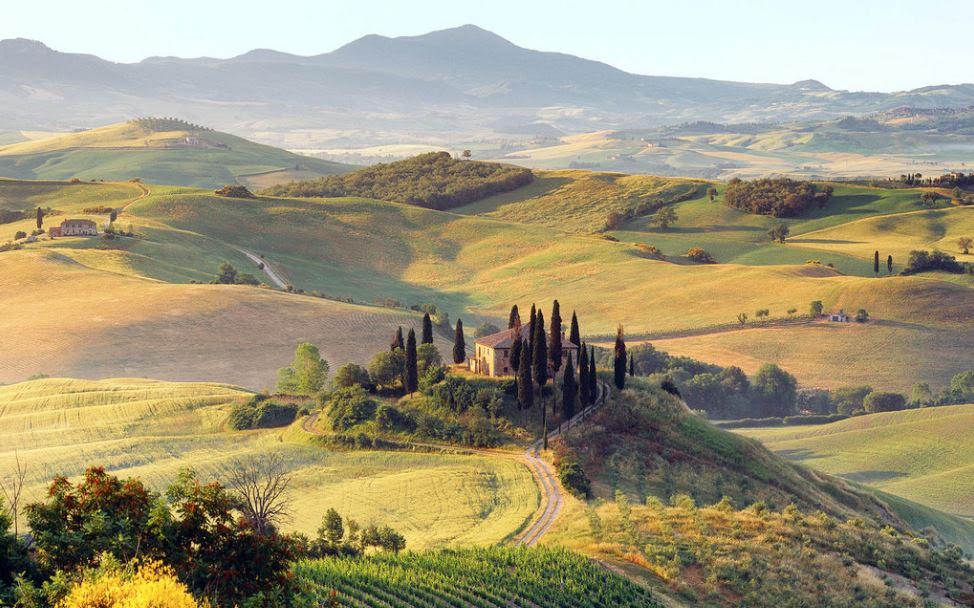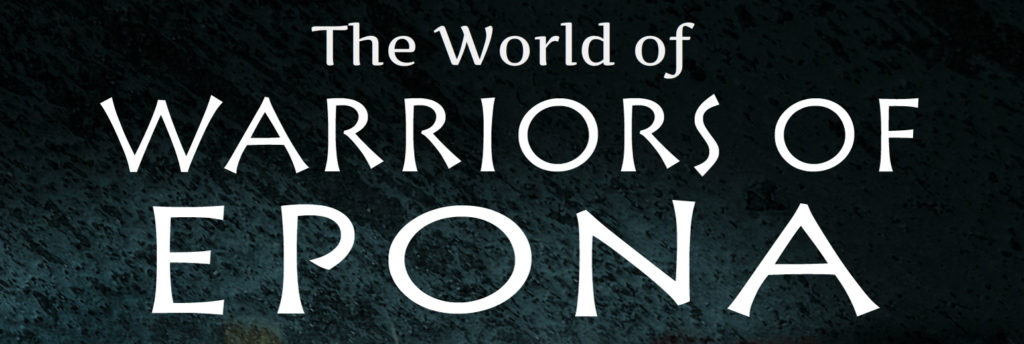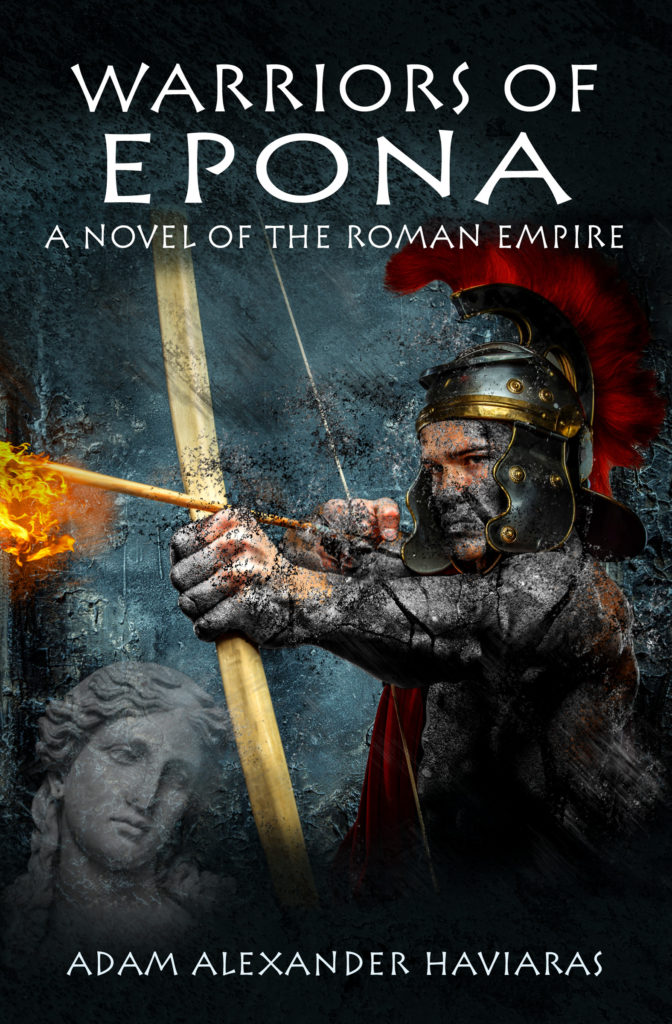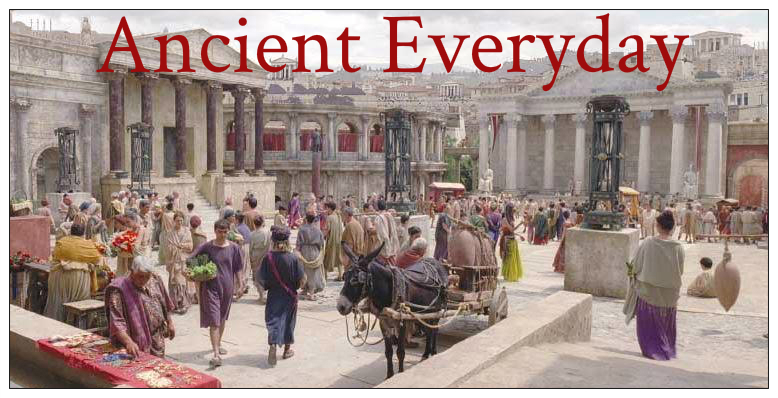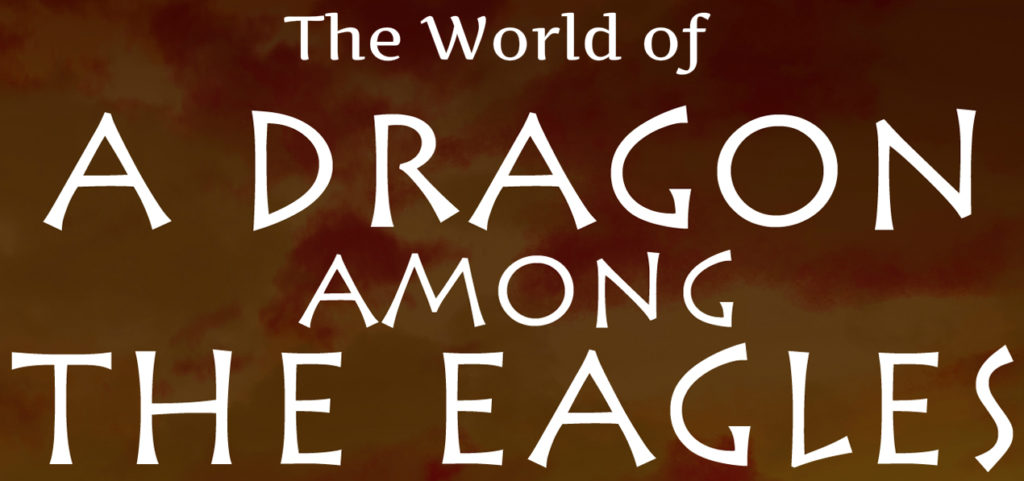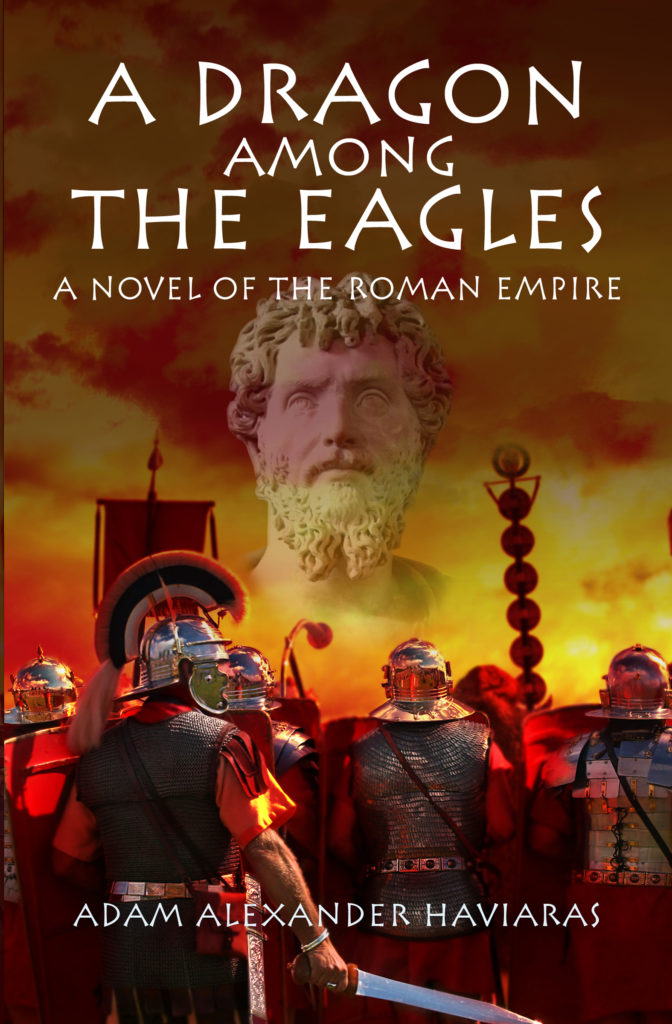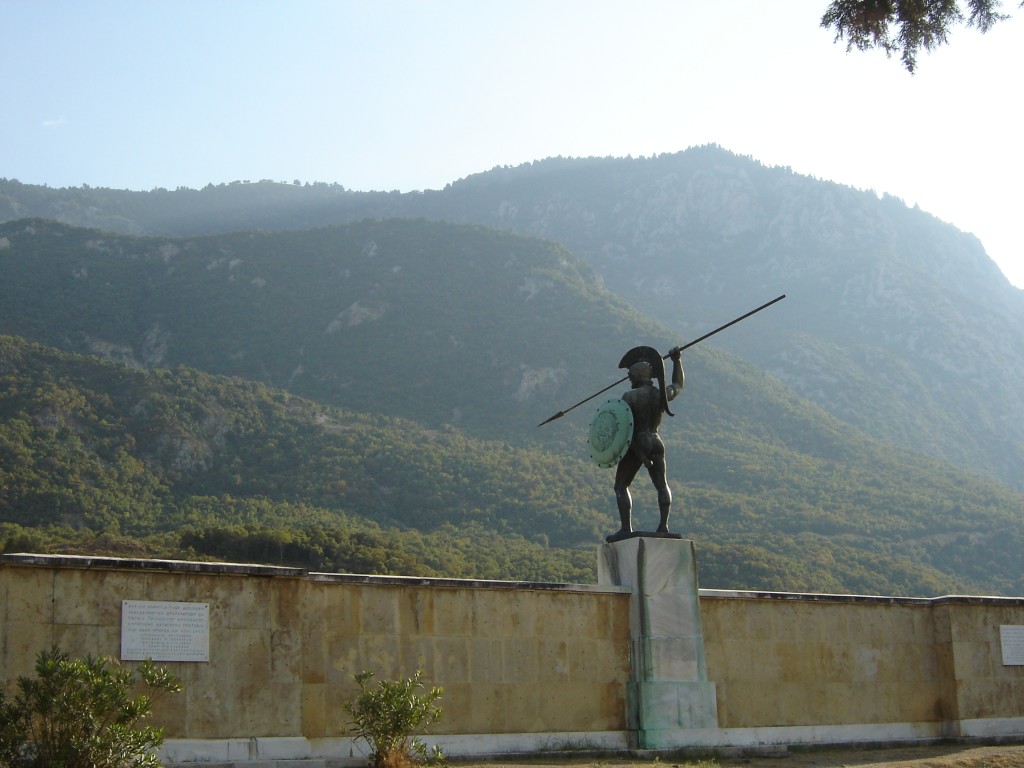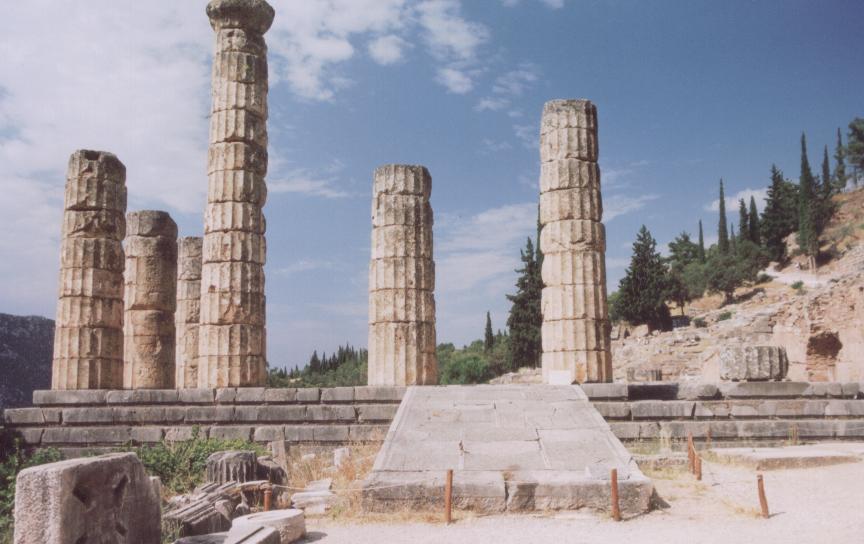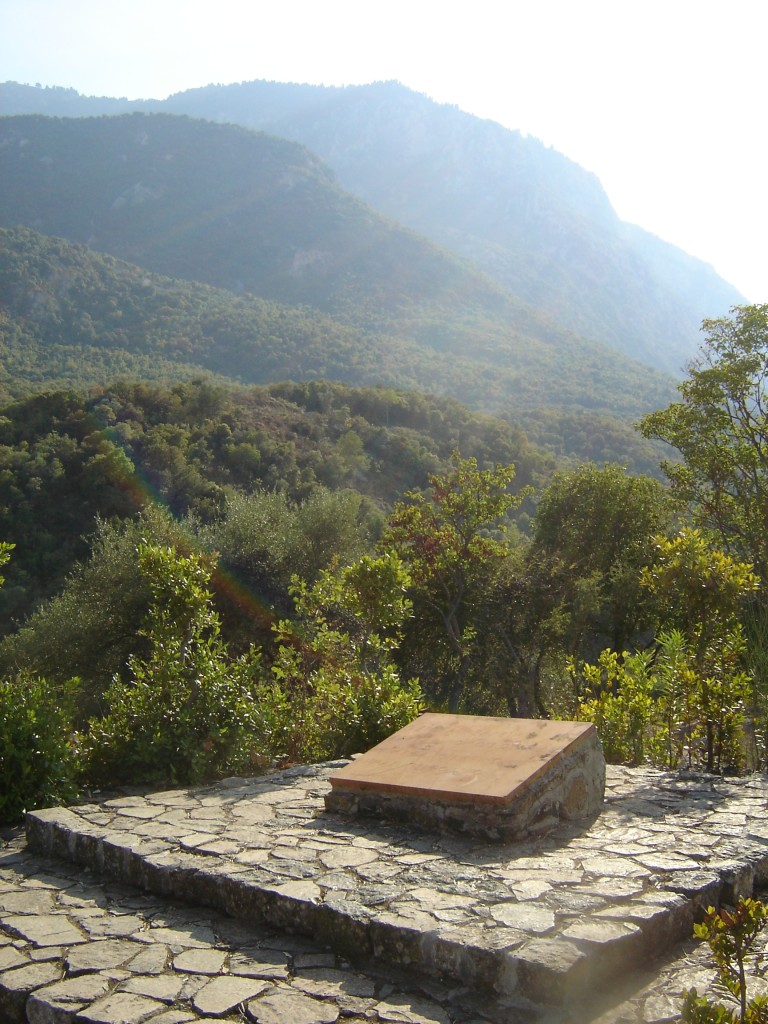
war
The Democratic Dilemma: Ancient Democracies and the Decision to Wage War
We make war that we may live in peace.
Aristotle
Is this statement of Aristotle’s correct? Perhaps it was in ancient Greece when the Persians were invading the lands of the Hellenes, murdering and enslaving them. It might even have been true in the smaller world of the Greek homeland when one neighbouring city-state overstepped and boundaries for the relationship needed to be re-established.
This is a very simplistic way of looking at it. War was part of life in the ancient world and a good city-state, and its citizens, were prepared for war if the need should arise.
Perhaps the better question to ask ourselves in regard to Aristotle’s words above is this:
Is this still true today?
Do we still make war that we may live in peace? Or do we make war for other reasons? And who is the ‘We’ in all of this?
As November 11th approaches and we rightly honour the sacrifices of our men and women in uniform, past and present, on Remembrance Day and Veterans Day, questions of war are front of mind for many of us.
I’ve been thinking about writing a post like this for some time now. Let’s face it, it’s not an easy topic, and many are divided. This is more of a thought process post in which we will take a brief look at what ancient democracies and republics did when it came to the decision to go to war, and whether we can learn anything from them today.
Sadly, I can’t recall a time when there wasn’t some terrible conflict choking the screens of our televisions, or drowning the feeds of our social media platforms. Tragically, it seems that our world is at a terrible tipping point.
It seems like ‘we’ are addicted to war.
Again, I ask, who is the ‘We’ in that statement? Here is another statement from Aristotle for us to consider as we wade through the weedy terrain of this topic:
We are what we repeatedly do.
Aristotle
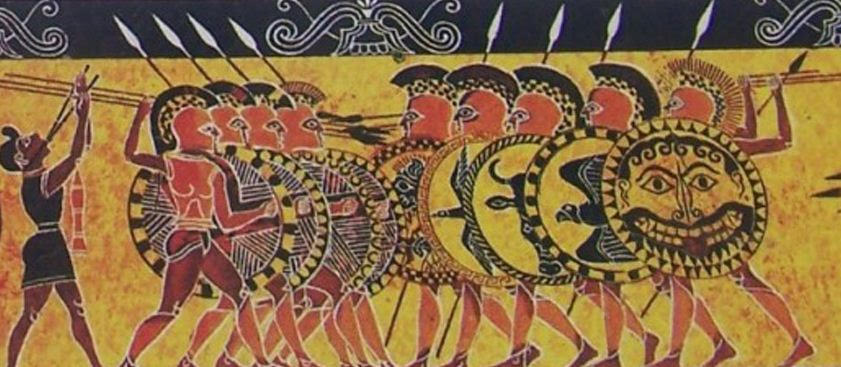
Ancient Greek Hoplites in Battle
The history of ancient democracies is marked by a fascinating interplay between citizen participation and the conduct of foreign affairs, particularly in matters of war. These early democratic societies grappled with the ethical and practical complexities of deciding whether to go to war against their enemies. The concept of “war by the people, for the people” was not only a foundational principle but also a challenging moral and strategic puzzle.
Let’s explore briefly the decision-making processes and the moral considerations that ancient democratic civilizations such as Athens and the Roman Republic confronted when deciding whether to wage war.
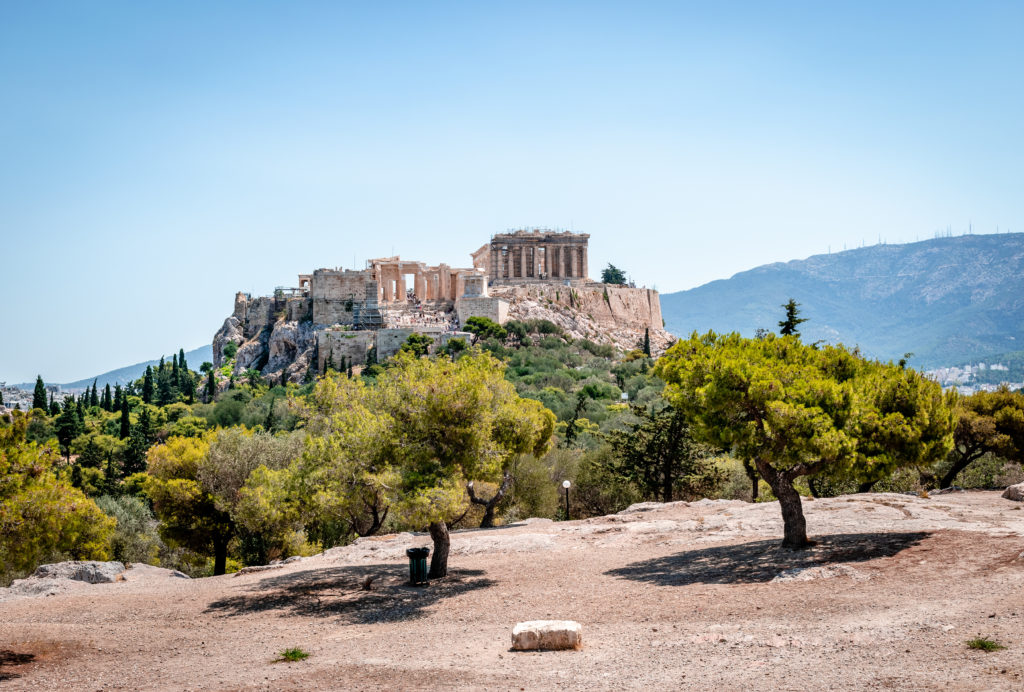
View of the Acropolis of Athens from the Pnyx, site of the Athenian Assembly
The Athenian Democracy
The Athenian democracy, which emerged in the 5th century BCE, is often hailed as a pioneering model of citizen participation in governance. At the heart of Athenian democracy was the Ekklesia, an assembly of free male citizens who could propose and vote on laws, including decisions related to war and peace. Thucydides, the ancient historian, captures the essence of Athenian democracy in his account of the Peloponnesian War:
Pericles… declared that a man who took no interest in public affairs was not a quiet, unoffending citizen, but a useless one. In one word, he conceived that they were born to serve the state, not only in matters great and high, but in the least and lowest also.
(Thucydides – History of the Peloponnesian War)
It is interesting to note that in ancient Greece, the word idiota referred to someone who refrained from participation in public life, who chose not to take part in the decisions that affected the democracy itself.
In ancient Athens, male citizens were expected serve the state, not only by serving the required minimum of two years in the military, but also by voting and putting forth an opinion on matters great and small, including the decision to go to war.
Are citizens’ voices and opinions held in such high regard today?
Let’s leave that particular question hanging for the moment.
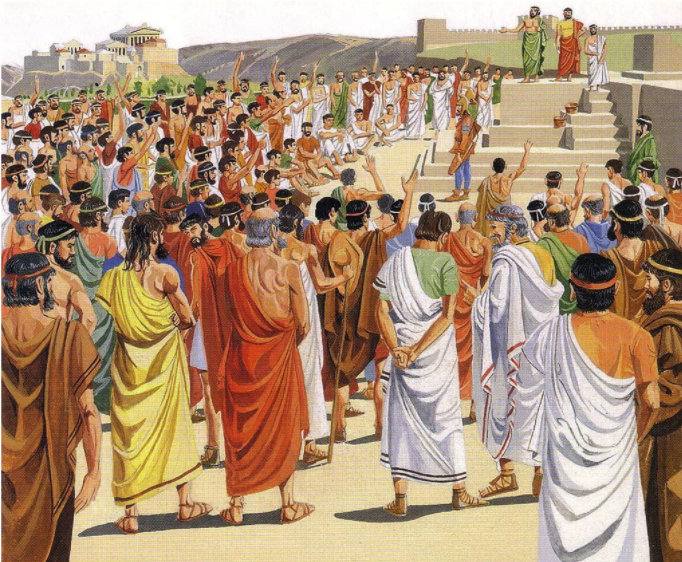
Artist impression of a meeting of the Athenian Assembly on the Pnyx
In the Ekklesia of ancient Athens, the moral dilemma of whether to undertake a certain action or policy, including whether or not to go to war, was expected to be strongly considered by the citizens of the assembly, the citizens of Athens.
However, this empowerment of citizens in the decision-making process came with its own dilemma. Athens faced a delicate balance between the pursuit of its interests and the ethical considerations of war. As Thucydides continues:
…a reason for attacking a neighbour; they thought it equitable to keep what they held and weak to give up anything, and it was more disgraceful to lose anything once possessed than not to have gained at all.
(Thucydides – History of the Peloponnesian War)
This statement will, of course, sting when it comes to the conflicts currently happening in parts of the world, as it should. However, when it comes to imperialistic tendencies, the moral dilemma behind this statement stings all the more.
If a country has what it has always had, if it has not been attacked, should it still go to war?
There is was definite tension between self-interest and moral principles in Athenian democracy. The Ekklesia had the power to decide on war, but it was not always clear whether the decision was driven by strategic necessity or imperial ambition.
Most citizens of the Greek city-states agreed that the war against Persia had to be waged. It was about survival, about ‘freedom or death’, a phrase that is ingrained in the Greek psyche to this day. Could the same be said of the Peloponnesian conflict?

Pericles’ funeral oration for Athenian dead of Peloponnesian War.
Wars have dire consequences on both sides of the conflict, so why do ‘we’ seem to be so willing to engage in them?
In ancient Athens, the people had a voice, or at least they were supposed to. Here are some specific examples of confrontations in ancient Athens in which the decision to go to war was hotly debated by the citizenry:
The Peloponnesian War (431-404 BCE) – Athens vs. Sparta
The outbreak of the Peloponnesian War between Athens and Sparta was met with significant debate in the Athenian Ekklesia. The statesman Pericles argued in favour of a defensive strategy, urging the Athenians to retreat behind the city’s walls and rely on their navy which was the strongest in the world at the time. However, there was public opposition to this strategy, with some advocating for a more aggressive stance.
Ultimately, the Athenian assembly decided to follow Pericles’ strategy, leading to the construction of the Long Walls that connected Athens to its port, Piraeus. Still, at various points during the Peloponnesian War, there were instances of public opposition to the conflict, particularly in Athens. The war’s prolonged nature and the suffering of the Athenian population led to widespread dissatisfaction.
The war, marked by several debates and shifts in strategies, eventually ended with the defeat of Athens in 404 BCE.
The Sicilian Expedition (415-413 BCE) – Athens vs. Syracuse
The Sicilian Expedition was a controversial military campaign proposed by the Athenian general Alcibiades not only against Sparta, but this time also against Corinth and Syracuse. Many Athenians were initially opposed to it due to its immense cost and risks.
Again, there was much debate in the Ekklesia of Athens with the young, arrogant Alcibiades pushing for war. In opposition to him, the commander, Nicias, debated that Athens should not go to war in Sicily, that they would be leaving powerful enemies at their backs as the war still raged in Greece. Nicias also tried to warn the assembly that Alcibiades and his proponents wanted to lead Athens into war for their own ends.
Despite public opposition and concerns, the Athenian assembly eventually approved the expedition. Unfortunately for Nicias, and for Athens, two hundred ships and thousands of soldiers were sent to Sicily, and they were all lost. Athens had spread itself too thinly and its, (and Alcibiades’) ‘imperial hubris’ were the death stroke for Athens.
The Sicilian Expedition ended in a catastrophic failure, with the Athenian fleet and forces suffering heavy losses, which significantly weakened Athens in the Peloponnesian War.
The Peloponnesian War and the Sicilian Expedition both had severe, negative impacts on both Athens and Sparta. Athens experienced a devastating plague that decimated its population, and the conflict drained its treasury. In Sparta, the prolonged war created economic hardships, and the agricultural land was ravaged. Ultimately, the war resulted in the eventual defeat and decline of Athens, but left both city-states significantly weakened.
In these prolonged conflicts one could say that both sides ‘lost’, for the winner and the loser both paid heavy prices.
Was the Athenian citizenry swayed by false promises and flowery rhetoric? Probably.

Painting depicting Cicero speaking out in the Senate
The Roman Republic
In the Roman Republic, a different form of democratic governance emerged. Power was divided between the Senate, an aristocratic body of elders, and various popular assemblies in which Roman citizens could vote on key matters. The Roman Republic’s decision to go to war was often a complex interplay between the Senate and the Popular Assemblies.
This form of government is more akin to our modern democracies than that of ancient Athens where citizens had the opportunity to speak for themselves in the assembly and to vote directly on decisions.
When it came to debates in the Roman Senate about decisions to go to war, few could argue so eloquently as the Roman statesman and philosopher, Cicero. He grappled with the ethical dimensions of war in his writings. In his work De Officiis (On Duties), he discusses the moral principles that should guide leaders in deciding whether to wage war:
[W]e must consider not only the honesty and justice of going to war, but also the ways and means of conducting it… Above all, nothing is more disgraceful than to be eager to make war, but without taking proper precautions.
(Marcus Tullius Cicero, On Duties)
Cicero’s emphasis on the necessity of just cause and proportionality in warfare reflects the moral concerns that were at the heart of Roman deliberations. He wasn’t against war, but strongly emphasized careful consideration of what it meant, the cost to the Republic and its citizens, as well as proper preparation if the decision to go to war was taken.
In the history of Rome, there were numerous wars and conflicts that were hotly debated and pushed for by various factions in the Senate and Popular Assemblies. Here are a couple of examples…
The Roman Invasion of Carthage (149-146 BCE) – Roman Republic vs. Carthage
When it came to the third Punic War which followed the defeat of Hannibal in the second, the Roman Senate was divided over whether to fight Carthage once more. Prominent senators like Cato the Elder argued passionately for the destruction of Carthage, citing it as a long-term threat to Rome. He was so eager for the destruction of Carthage that it is said that he ended nearly every speech in the Senate with Carthago delenda est – “Carthage must be destroyed”.
However, others were more cautious, as Carthage posed no immediate danger, having been thoroughly trounced at the Battle of Zama.
Despite opposition to the war – for the Roman people had suffered greatly in the previous one with Hannibal arriving at the gates of Rome itself – the Roman Senate ultimately declared war on Carthage and the Third Punic War began. The conflict ended with the complete destruction of Carthage in 146 BCE, symbolized by the razing of the city, the apparent salting of the surrounding earth, and the enslavement of its population. Rome may have won that particular war, but at what cost to the Roman people?
The Roman Civil Wars (1st Century BCE) – Various Factions
The final years of the Roman Republic were marked by intense political and military conflicts among various factions, including the Populares and the Optimates. Key figures like Julius Caesar, Pompey, and Cicero were involved in debates over the course of action. Cicero, for instance, consistently advocated for the preservation of the Republic through peaceful means. He loved the Republic, and did not want to see it destroyed.
The aim of a ship’s captain is a successful voyage; a doctor’s, health; a general’s, victory. So the aim of our ideal statesman is the citizens’ happy life–that is, a life secure in wealth, rich in resources, abundant in renown, and honourable in its moral character. That is the task which I wish him to accomplish–the greatest and best that any man can have.
(Marcus Tullius Cicero, On the Republic / On the Laws)
Unfortunately for the Roman people, the prolonged civil war that came out of the debates brought about political instability, economic hardships, and military conscription, which took a toll on the Roman populace. The social fabric of Rome was torn asunder, and the eventual victory of Julius Caesar marked the end of the Republic and the beginning of the Roman Empire, with centralized imperial rule replacing the traditional republican system.
Cicero had been justified in his concern about the erosion of the Republic’s institutions.
In both the examples of the Third Punic War and the Civil Wars, the disregard for public opposition to war by political leaders had serious repercussions. These instances serve as cautionary tales, highlighting the consequences of leaders pursuing their agendas despite significant public resistance, ultimately leading to significant upheaval and societal change.
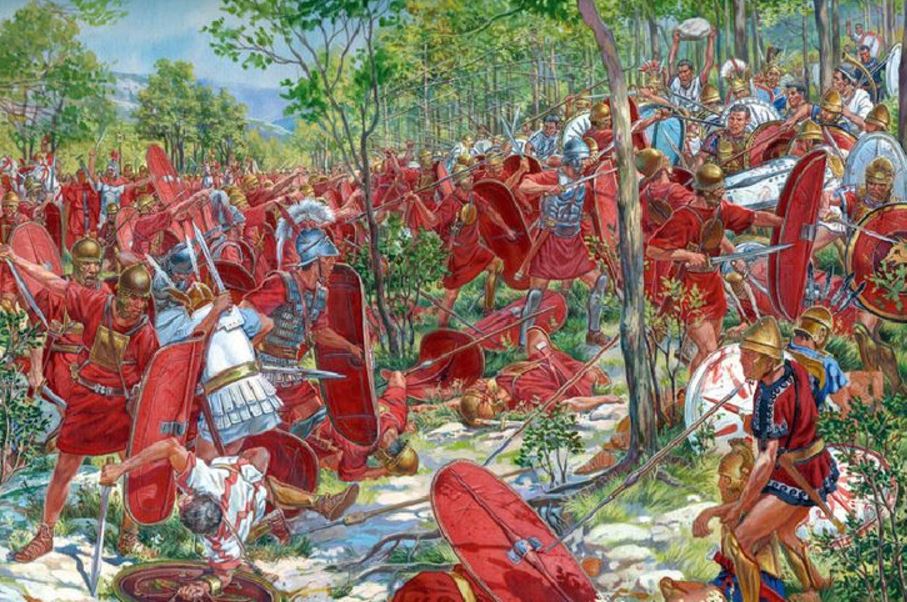
Civil War
This is a vastly complicated topic, and we have but scratched the surface of the armour here. We’ve only looked at a few examples out of many in the history of Greece and Rome.
Comparing the Athenian and Roman models of democracy reveals striking differences in their approaches to war. Athens embraced a more direct form of democracy, where the citizens themselves decided on matters of war. This often led to rapid and aggressive military actions. In contrast, the Roman Republic, with its complex system of checks and balances, tended to approach war with more caution, as reflected in Cicero’s moral reflections. Still, were the wishes of Rome’s citizens carefully considered? Was Cicero facing a tidal wave of opposition, or were the greedy motives of a few what brought war to the Roman people once again?
Both Athens and Rome grappled with moral considerations when deciding whether to wage war. Pericles’ assertion of civic duty in Athens and Cicero’s ethical principles in Rome demonstrate that moral discourse was intrinsic to these ancient democracies. However, both models were not infallible. One could say that the Athenian democratic and Roman Republican models allowed for debate, but were also prone to more impulsive decisions driven by self-interest.

Artist impression of the Second Macedonian War
Ancient democracies navigated the intricate path of deciding whether to wage war against their enemies. These societies, though distinct in their democratic structures, were united in their commitment to deliberating the ethical dimensions of warfare.
The tension between self-interest and moral principles was an enduring challenge, reflecting the enduring complexity of democratic decision-making.
As we reflect on these historical examples, we are reminded that the dilemma of whether to go to war or not remains a pressing concern in contemporary democracies. The lessons of the past offer valuable insights into the delicate balance between the will of the people and the moral and strategic imperatives that underpin the decision to wage war. Ancient democracies can serve as a source of inspiration and contemplation as we grapple with the challenges of our own time.
Modern politicians would do well to mind what history has taught us.
Public opposition and debates were common, reflecting the diversity of opinions within these societies. The outcomes varied, often with significant consequences for the states involved.
Certainly, there were instances in ancient Greece and Rome where the people were strongly opposed to going to war, but politicians ignored their concerns and pursued military campaigns regardless. These wars often had negative impacts on the populations involved, and this is not relegated to the distant past, but has indeed played out in the modern era.

Vietnam War
Here are some examples:
The Vietnam War (1955-1975) – This conflict had devastating consequences for both the United States and Vietnam. It resulted in a high death toll, significant economic expenditure, and a deeply divided American society. The war also led to environmental damage due to the widespread use of defoliants like Agent Orange.
In the case of the Vietnam War, American politicians faced widespread public opposition, with anti-war protests, draft dodging, and disillusionment among the youth. The negative impact of the war, both in terms of lives lost and economic burden, weighed heavily on subsequent administrations. The war’s unpopularity played a role in the electoral defeat of President Lyndon B. Johnson and influenced the 1972 presidential election.
The Iraq War (2003-2011) – This war had profound negative consequences. It destabilized the region, led to the loss of thousands of lives, and incurred substantial financial costs. The war’s aftermath saw the rise of extremist groups and sectarian violence, contributing to regional instability that persists to this day.
The Iraq War faced significant public opposition, and politicians who supported it faced criticism. The war’s costs, both in terms of lives and resources, contributed to declining public support and played a role in the 2008 presidential election, where the Iraq War was a key issue.
The Afghanistan War (2001-2021) – This was America’s longest conflict, and it had significant negative consequences. It resulted in a protracted and costly military engagement, with a high human toll. Despite initial objectives to combat terrorism, Afghanistan remained politically unstable, and the Taliban regained control following the U.S. withdrawal in 2021.
The Afghanistan War eroded public support over time and, one could say, the global good will toward the U.S. after 9/11 was ultimately squandered by the drawn out conflict. Politicians who advocated for continued military involvement often faced scrutiny, and the war’s unpopularity became a factor in subsequent elections.
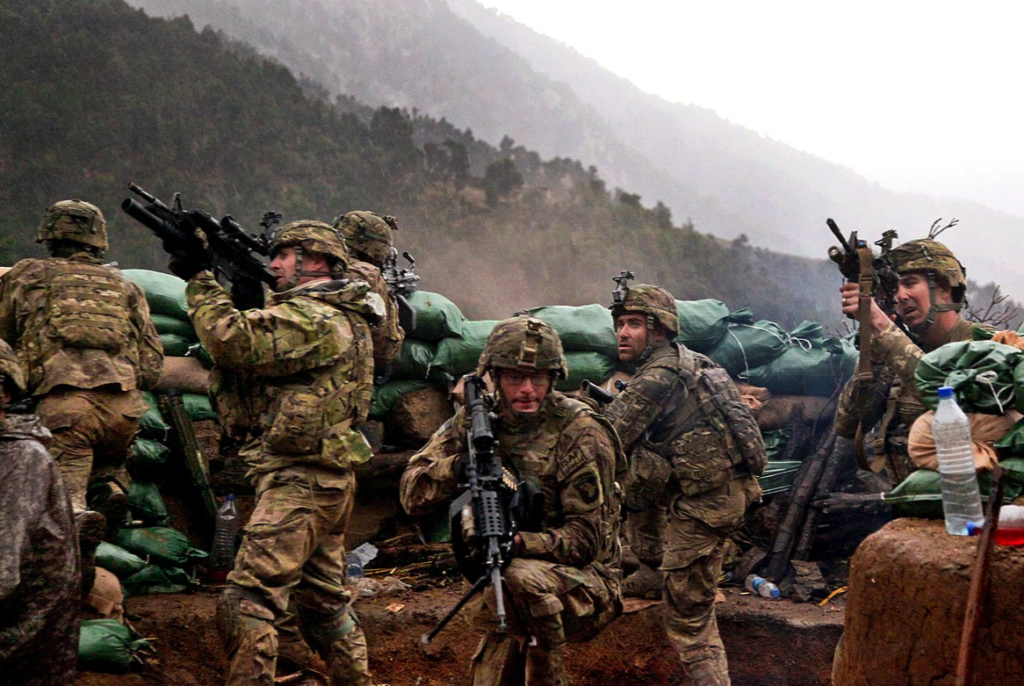
American troops in Afghanistan
Again, these are just a few examples of wars, but it is worth asking: Are they worth the human, financial, and societal costs?
Perhaps modern politicians should listen more closely to public opinion, and take a more ‘Ciceronian’ approach to war when assessing the costs and consequences of going to war? There should be a robust debate. Should any one person make the decision to go to war? I would say there is too much at stake to allow that.
Citizens of modern democracies are led to believe that politicians encourage open and robust debates on matters of war and conflict. Do they?
Public discourse and debate can help weigh the pros and cons, ensuring that decisions are well-informed and scrutinized. Does that happen?
Do you think that diplomacy and conflict resolution should be prioritized whenever possible?
Do you believe that war should be a last resort, and politicians should exhaust all diplomatic avenues before considering military action?
Again, we come back to one of the questions asked at the outset: Are citizens’ voices and opinions on these matters held in such high regard today as they were, say, in ancient Athens?
In ancient democracies, the people had avenues to express their wishes in matters of war, but do we truly have that today? Do the people’s wishes truly matter? Are our politicians simply taking the ‘easy’ way out?
It is more difficult to organize a peace than to win a war; but the fruits of victory will be lost if the peace is not organized.
Aristotle

The Voice of the People
I realize that our modern western democracies are enormous, covering continents in some instances. It is impossible for all citizens to gather in one place to debate, discuss, and vote as the Athenians did on the Pnyx in ancient Athens, or as the Roman people did on the Field of Mars or in the Forum Romanum.
Today, the people have their elected representatives speaking for them, be it in the House of Commons, or the in the Senate. The decisions taken in these bodies affect everyone.
The question now is, do you, as a citizen feel like your representatives in the Commons or Senate hear you and consider your own wishes and needs? When it comes to the deeply serious moral dilemma of whether or not our democracies should go to war, are the citizenry being listened to?
What would the world be like if all of our politicians were as thoughtful as Cicero, for example, when it came to matters of war and its consequences?
In some of the examples above, we’ve seen what happens when the citizenry is ignored. So today, we need to ask ourselves that if the will of the majority, of the people, is not being taken into account when it comes to the decisions that impact our way of life, our world, our very lives, is change required? Is the system of government broken? Have the elected representatives in our democracies lost sight of the true nature and purpose of those same democracies?
History seems to be repeating itself, and not in a good way.
Is it time for the citizenry to reassert its voice? Should there be virtual referendums when it comes to the decision of going to war?
I, like many of you, have many questions and doubts. But I do know this: Democracy may not be a perfect or fool-proof system, but it is (or at least it should be) at its core, more honest and fair.
Maybe we just need more Ciceros.
Thank you for reading.
This Remembrance Day and Veterans Day, Eagles and Dragons Publishing is, as always, grateful to our men and women in uniform who risk their lives to keep us all safe at home and abroad. We are proud to have made contributions to the causes of the following charities: Royal Canadian Legion Poppy Campaign, War Child Canada, and Wounded Warriors Canada.
The World of Isle of the Blessed – Part VII – The Severan Invasion of Caledonia: Victory or Failure?
In the midst of the emperor’s distress at the kind of life his sons were leading and their disgraceful obsession with shows, the governor of Britain informed Severus by dispatches that the barbarians there were in revolt and overrunning the country, looting and destroying virtually everything on the island. He told Severus that he needed either a stronger army for the defence of the province or the presence of the emperor himself. Severus was delighted with this news: glory-loving by nature, he wished to win victories over the Britons to add to the victories and titles of honour he had won in the East and the West. Be he wished even more to take his sons away from Rome so that they might settle down in the soldier’s life under military discipline, far from the luxuries and pleasures of Rome. And so, although he was now well advanced in years and crippled with arthritis, Severus announced his expedition to Britain, and in his heart he was more enthusiastic than any youth. During the greater part of the journey he was carried in a little, but he never remained very long in one place and never stopped to rest. He arrived with his sons at the coast sooner than anyone anticipated, outstripping the news of his approach. he crossed the channel and landed in Britain; levying soldiers from all the areas, he raise a powerful army and made preparations for the campaign.
(Herodian, History of the Empire, XIV,1-3)
Welcome to the seventh and final part in The World of Isle of the Blessed.
In Part VI, we looked at the mystery of decapitated Roman bodies found in York, and how they may relate to Caracalla’s rampage upon taking the imperial throne after the death of his father, Emperor Septimius Severus. If you missed that post, you can check it out HERE.
In Part VII, we are going to be looking at Severus’ Caledonian campaign that is the focus of Warriors of Epona (Eagles and Dragons – Book III) and the newest release in the series, Isle of the Blessed.
First of all, why did Septimius Severus march on Caledonia? The main reason most often given by the sources is that it was something he thought would give his unruly sons, Caracalla and Geta, focus. It was something to train them for the role of emperor. Severus was a big believer in the importance of nurturing the loyalty of the legions, and so perhaps he also hoped his sons would prove themselves and, in the process, earn that loyalty.
But there had to be more to it than a training exercise for his delinquent boys.
Severus’ Caledonian campaign was enormous. He moved on Caledonia with at least three full legions (the II Augusta, the VI Victrix, and the XX Valeria Victrix) as well as greater numbers of detachments and auxiliary units. When Septimius Severus took the imperial throne, he was immediately engaged in consolidating the Empire after the civil war, and then taking on the Parthian Empire. He was a military emperor, and he knew how to keep his troops busy, and how to reward them.
The Caledonians had been a thorn in Rome’s side for a long while at that time, but it was not until A.D. 208 that Severus was finally able to deal with them. And so, the imperial army moved to northern Britannia, poised to take on the Caledonians once again.
We’ve already touched on Severus’ campaign in The World of Warriors of Epona blog series. However, it’s important to note that this is believed to be the last real attempt by Rome to take a full army into the heart of barbarian territory.
Severus moved on the Caledonians with the greatest land force in the history of Roman Britain, making use of his predecessors’ fortifications (such as the Gask Ridge frontier) and roads, and penetrating almost as far as Agricola’s legions over a hundred years before.
The war may have been an opportunity to train and discipline Severus’ sons, but it seems evident that the true intention of the Caledonian campaign was to put a stop to the rebellious behaviour of the Caledonii, Maeatae and other Caledonian tribes.
Severus’ ultimate goal was the complete and permanent conquest of Caledonia.
There are two principal races of the Britons, the Caledonians and the Maeatae, and the names of others have been merged in these two. The Maeatae live next to the cross-wall which cuts the island in half, and the Caledonians are beyond them. Both tribes inhabit wild and waterless mountains and desolate and swampy plains, and possess neither walls, cities, nor tilled fields, but live on their flocks, wild game, and certain fruits; for they do not touch the fish which are there found in immense and inexhaustible quantities. They dwell in tents, naked and unshod, possess their women in common, and in common rear all the offspring. Their form of rule is democratic for the most part, and they are very fond of plundering; consequently they choose their boldest men as rulers. The go into battle in chariots, and have small, swift horses; there are also foot-soldiers, very swift running and very firm in standing their ground. For arms they have a shield and a short spear, with a bronze apple attached to the end of the spear-shaft, so that when it is shaken it may clash and terrify the enemy; and they also have daggers. They can endure hunger and cold and any kind of hardship; for they plunge into the swamps and exist there for many days with only their heads above water, and in the forests they support themselves upon bark and root…
(Cassius Dio, The Roman History 12,1)
It seems that Severus knew the Caledonian campaign would not be easy, for this was a huge offensive with a lot of military might behind it. However, one has to wonder if they knew what to expect. The Caledonii and the Maeatae were smart fighters. They knew their terrain, and their strengths. But they also knew Rome’s strengths, and so refused meet the legions in a pitched battle.
The result? A brutal guerrilla war.
…as he [Severus] advanced through the country he experienced countless hardships in cutting down forests, levelling the heights, filling up swamps, and bridging rivers; but he fought no battle and beheld no enemy in battle array. The enemy purposely put sheep and cattle in front of the soldiers for them to seize in order that they might be lured on still further until they were worn out; for in fact the water caused great suffering to the Romans, and when they became scattered, they would be attacked. Then, unable to walk, they would be slain by their own men, in order to avoid capture, so that a full fifty thousand died.
(Cassius Dio, The Roman History 14,1)
Severus’ Caledonian campaign was actually carried out in two phases. The first, explored in the novel Warriors of Epona, actually ended in a peace treaty in which Dio tells us that Severus “forced the Britons to come to terms, on the condition that they should abandon a large part of their territory.”
If Dio’s horrific number of fifty-thousand Roman casualties is to be believed (remember, ancient sources are often prone to exaggeration), then the Caledonii must have suffered even greater losses if they agreed to the terms.
It is here that one of the strangest episodes of the campaign occurred, though it had nothing to do with actual fighting, or the Caledonians.
On another occasion, when both [Severus and Caracalla] were riding forward to meet the Caledonians, in order to receive their arms and discuss the details of the truce, Antoninus [Caracalla] attempted to kill his father outright with his own hand. They were proceeding on horseback, Severus also being mounted, in spite of the fact that he had somewhat strained his feet as a result of his infirmity, and the rest of the army was following; the enemy’s force were likewise spectators. At this juncture, while all were proceeding in silence and in order, Antoninus reined in his horse and drew his sword, as if he were going to strike his other in the back. But the others who were riding with them, upon seeing this, cried out, and so Antoninus, in alarm, desisted from his attempt. Severus turned at their shout and saw the sword, yet he did not utter a word, but ascended the tribunal, finished what he had to do, and returned to headquarters.
(Cassius Dio, The Roman History, 14,3)
When they had returned to base, Severus apparently chided his son before Castor, his freedman, and Papinianus, the Praetorian Prefect, both men whom Caracalla hated and who would later feel his wrath.
It would seem that Septimius Severus, during the Caledonian campaign, was fighting a war on two fronts in a way – one in the glens and forests of Scotland, and the other at home. If the emperor was hoping that the campaign would bring his two sons closer together, he was wrong in that assessment. With Geta running the imperial administration in Eburacum (York) and Caracalla leading the troops in Caledonia, it seemed the rift between them was growing wider and wider.
After the treaty with the Caledonians was settled, Septimius Severus, growing more and more ill and infirm, returned to Eburacum. It was during this time that Caracalla is supposed to have tried to get his father’s doctors to speed his demise, an act they refused to do at their own peril.
It was not long, however, before the Caledonians and Maeatae broke the treaty and the drums of war began to thrum once again. It is the second, bloody portion of the Caledonian campaign that takes place in Isle of the Blessed.
Cassius Dio quotes the ailing emperor’s words when he discovered that the Caledonians and Maeatae had broken the truce:
When the inhabitants of the island again revolted, he summoned the soldiers and ordered them to invade the rebels’ country, killing everybody they met; and he quoted these words:
“Let no one escape sheer destruction,
No one our hands, not even the babe in the womb of the mother,
If it be male; let it nevertheless not escape sheer destruction.”
When this had been done, and the Caledonians had joined the revolt of the Maeatae, he began to make war upon them in person. While he was thus engaged, his sickness carried him off on the fourth of February, not without some help, they say, from Antoninus.
(Cassius Dio, The Roman History, 15,1)
The Romans began visiting brutal retaliation upon the enemy then, but all ground to a halt with the death of Emperor Septimius Severus at York.
It is at this point that Caracalla and Geta became co-rulers. However, Their primary objective now was to return to Rome and garner support.
The brothers, despite the hope of their parents, tutor, and others, were anything but harmonious.
Caracalla began gathering support and power unto himself, and it is at this time that he carried out the bloody killings hinted at by the discoveries at York we heard about in Part VI of this blog series.
After the death of Septimius Severus, the Caledonian campaign came to an abrupt end:
Antoninus [Caracalla] assumed the entire power; nominally, it is true, he shared it with his brother, but in reality he ruled alone from the very outset. With the enemy he came to terms, withdrew from their territory, and abandoned the forts; as for his own people, he dismissed some…and killed others…
(Cassius Dio, The Roman History, 11,1)
The Severan invasion of Scotland was a massive campaign, involving hundreds of thousands of men. It was not nearly as large as his successful Parthian campaign in which he led thirty-three legions east, but it was one of the largest Roman operations on British soil.
50,000 Roman dead.
And how many more Caledonian and Maeatae casualties?
If Cassius Dio is correct, the numbers are staggering.
But was the campaign a victory or a failure for Rome? Was it worth it?
Severus had not only wished for the complete and permanent conquest of Caledonia, but also for the war to give his sons discipline, for it to bring them close together.
Perhaps Severus also wanted to add one more battle honour to his name – ‘Britannicus’?
If we are to believe Cassius Dio and Herodian, our primary sources for this period, we must conclude that Severus’ Caledonian campaign was more of a failure, not because Rome lost on the field of battle – indeed, despite the loss of life, they brought the tribes to their knees temporarily – but because the finalizing of the campaign was left in the hands of incapable heirs whose only concern was to return to Rome and gather power, heirs who continued to hate each other.
How many possible victories in history have been wasted in a greedy aftermath?
Caracalla and Geta abandoned Caledonia and returned to Rome with destruction and bitter enemies in their wake.
The forts of the Gask Ridge, the would-be northern capital of Horea Classis, and the Antonine wall, Trimontium and other forts were abandoned and silent once more. Rome’s allies in the fight, mainly the Votadini, were left to their own defences yet again.
The Caledonians and Maeatae had been paid off, and may have been quiet for a time, but they would rebel again…and again.
And so the cycle of powerful men wasting the lives of loyal troops in foreign wars echoes through history without end. And the same goes for the pain and suffering on both sides of any conflict.
The Severan invasion of Caledonia was just another such conflict.
And for the characters in Isle of the Blessed, the scars of that conflict will be long-lasting indeed.
Thank you for reading.
We hope you have enjoyed this blog series on The World of Isle of the Blessed. If you missed any of the posts, or would like to read them again, you can read the entire blog series by CLICKING HERE.
Isle of the Blessed (Eagles and Dragons – Book IV) is available in e-book and paperback in most major on-line retailers HERE.
If you haven’t read any books in the Eagles and Dragons series yet, you can start with the #1 bestselling A Dragon among the Eagles for just 0.99! Or get the first prequel novel, The Dragon: Genesis, for FREE by signing-up for the newsletter HERE.
Stay tuned for our next blog series about Book V in the Eagles and Dragons series, The Stolen Throne (available now).
The history, archaeology and mythology continue, and we’re thrilled to have you along for the ride.
The Warrior’s Homecoming
Today is Remembrance Day.
On November 11th, at the eleventh hour, I’ll be at my local cenotaph, standing alongside my fellow civilians, veterans and emergency services crews to honour and remember those have served, and those who have fallen in the line of duty.
I suspect that most of us have a connection to someone who has served in one of the many conflicts across the world since WWI and WWII to the present day. Or perhaps you know someone who battles to save lives on the streets of our cities?
For myself, one of my grandfathers served in both World Wars, and my other grandfather in WWII.
This is a time of year when I think of them more than usual.
I write a lot about warriors in the ancient world, and the struggles they face on and off the battlefield.
My protagonists have fought long, bloody campaigns, far away from the comforts of civilization.
They’ve faced enemies that will not come out into the open, and sometimes must rely on supposed allies that they cannot trust.
For the warriors in my books, life is a constant fight for survival. They fight and kill and die for Rome, all for the purposes of advancing the Empire’s plans for conquest.
Indeed, one of the themes running through all my books is that of the powerful few sending many to die on the battlefields of the Empire. The soldiers are at the whim of those roaming and ruling the corridors of power.
Sound familiar?
My, how history does repeat itself.
Always at the back of my protagonist’s mind is the family that he misses. But if he thinks on them too much, if he loses his focus at any time, his enemies will tear him apart.
The warrior’s life has never been an easy one, especially when you have something to lose.
But what happens when it’s time for the warrior to ‘come home’?
How is it even possible after the life they’ve led? Can they really ‘come home’?
How have warriors, men and women, dealt with the aftermath of war?
In his book The Warrior Ethos, Steven Pressfield asks a pertinent question:
All of us know brothers and sisters who have fought with incredible courage on the battlefield, only to fall apart when they came home. Why? Is it easier to be a soldier than to be a civilian?
In one way, perhaps life at war is more straightforward. Every day, every moment perhaps, your thoughts, your purpose, are focussed on the objective – take that position, hold that region, protect your brothers and sisters in arms, stay alive. In some situations, it’s kill or be killed.
We’re back to primal instincts here.
Stepping from the world of war into the civilian world is an unimaginable transition.
Today, we have any number of soldier’s aid societies and government programs and guides that are intended to help veterans of wars reintegrate into society.
These groups do good work that is much-needed, but is it enough? How can non-combatants in civilian society understand the physical and emotional trauma that is experienced by warriors after the battle?
In the ancient and medieval worlds, there were no societies or organizations whose purpose was to help returning warriors.
Granted, in warrior societies such as Sparta, the majority of warriors probably enjoyed the fighting. All Spartan men were warriors. That was their purpose.
But in the Roman Empire, returning warriors would have had to reintegrate in a way similar to today, rather than ancient Sparta. Later Roman society valued not just fighting prowess, but also political acuity, the arts, rhetoric, skill at a trade, generally being a good citizen in society.
Going back to peace time in a civilian society after the straightforward survival life of a prolonged campaign would have been tough.
We read about legionaries coming back to Rome and getting into all sorts of trouble, their days and nights taken up with gambling, brawling, and whoring.
It’s no wonder that generals and emperors created coloniae for retired soldiers on the fringes of the Empire. In these places, veterans would not be able to cause trouble in Rome, but they would also be given the opportunity to have some land and make a life for themselves.
In my book Warriors of Epona, my protagonist is reunited with his family. He has to face peace time.
How does he deal with this? How does his family deal with him?
War changes a person, whether it’s in the past or the present day. It’s an experience unlike any other and I salute anyone who faces the conflict that comes with stepping from the world of war into the world of peace, and vice versa.
In the Roman Empire, they were two very different battlefields, as they are, I suspect, today.
I imagine that reconciling the two worlds can push a man or woman to their very limits.
I’ve often thought that governments should step up more when it comes to helping veterans. How about free college education for veterans and their families? Or exemption from taxation for them and their families for all they have risked and sacrificed? What about a good pension?
Veterans today shouldn’t have to worry about finances or a roof over their heads. They have enough to deal with when the fighting is done.
I’ve read that Alexander the Great actually did these things for his veterans, and the Roman Empire granted lands to hers.
Any government people who happen to be reading this should take notes.
We can also do our part, whether it’s wearing a red poppy, thanking a veteran for their dangerous work, or donating to an organization that directly helps veterans and their families.
The very least we can do is be quiet for a minute at 11:00 a.m. on November 11th.
As ever, at this time of year, I feel like my words fall short, that they are not nearly enough. I’d like to close this by expressing my heartfelt thanks and gratitude to the men and women in uniform who have risked, and are risking, their lives to keep us safe and free.
THANK YOU.
And thank you, dear readers, for following along.
In future, when you read a novel about warriors in the ancient world, do bear in mind that there are modern equivalents. The homecomings for many of them are far more difficult than we can imagine.
Today, there are numerous organizations whose sole purpose is to help veterans, young and old, to make the transition from war zone to home front.
This year, Eagles and Dragons Publishing has made donations to two organizations whom we believe are making a real difference in the lives of veterans.
Wounded Warriors Canada’s mission is “To honour and support Canada’s ill and injured Canadian Armed Forces members, Veterans, First Responders and their families.”
Eagles and Dragons Publishing has donated to the ‘Couples Overcoming PTSD’ program.
VETS Canada is committed to helping homeless and at-risk veterans reintegrate into civilian life.
Eagles and Dragons Publishing has made a general donation to this wonderful, volunteer-led organization helping veterans in need.
The World of the Carpathian Interlude – Part IV : Rome’s Nightmare – The Varus Disaster
Have you ever wondered why forests are so often the setting for nightmares?
Think about it. It’s true.
I remember a recurring nightmare that I had when I was a child: I’m in a dark forest, walking by myself. My feet crunch on a carpet of dead leaves in a slow, steady rhythm. Then a second set of footsteps, comes into my hearing, only they’re faster. They’re pursuing me. I begin to panic, and run. I yell but the woods devour my cries. I believe someone is chasing me, and my heart is close to bursting… And then I wake up.
That might not seem scary now, but when you are 6 it’s another story.
Nightmares are fascinating and curious. As a child I didn’t know that the quickening steps of my forest pursuer were really the sound of the blood pulsing in my ear as it pressed into my pillow. Those woods were terrifying to me.
Think about the woods again. How many of you have read or heard scary stories that take place in a forest? For ages, the woods or any kind of forest, have been shadow realms of the unknown, places of magic and nightmare, of beasts and death.
But there is a reason why forests have become such monsters in and of themselves. Not all tales of horror in the woods are fabricated by active, childish minds.
The Carpathian Interlude series revolves around a particular event in Roman history known as the Varus Disaster. It took place in A.D. 9, during the reign of Emperor Augustus, and it was truly the stuff of nightmares.
Public Quinctilius Varus was a patrician Roman general and member of the imperial circle who had been put in charge of the administration of Germania, which had only recently been tentatively subdued by Rome. Varus had previously had success governing provinces in Africa, Syria, and Judea, so it was believed he would be more than capable of handling Germania.
Varus is said to have also had a reputation for being a tyrant who inflicted brutal punishment on the people he was governing and squeezing taxes out of.
It’s safe to say that Varus thought he was quite secure in his position. He was a skilled administrator by Roman standards, had a proven track record, the bloodline to back it up, and a staff of trusted advisors.
Among the people on Varus’ staff was a man named Arminius. Does that name ring a bell?
Arminius was the son of Segimerus, the chieftain of the Cherusci, a Germanic tribe that had bent the knee to Rome. As surety for their father’s good behaviour, Arminius and his younger brother Flavus were sent to Rome when they were just boys. We’ll focus on Arminius.
Arminius grew up in Rome, learned the ways of Roman life, and politics, and martial prowess. He began to make a name for himself and was admitted to the Equestrian order to become a cavalry officer.
When Varus was assigned to Germania, Arminius went with him as one of his most trusted advisors and skilled officers. In fact, it’s said that Varus and Arminius regularly dined together; no doubt Varus valued Arminius’ advice in governing the lands of his former people.
This is the seed of the nightmare of which I spoke earlier.
In the late summer of A.D. 9, Publius Quinctilius Varus led three legions (the XVII, XVIII, and XIX Legions) deep into Germania to collect taxes and tribute. Varus also had with him six auxiliary cohorts, three cavalry alae, slaves, and camp followers consisting of women, children, merchants and tradesmen. This was a large, slow-moving army. Because they were in a dense forest, the line of march was thin, and stretched over 15-20 kilometres.
But Varus felt he had little to worry about and was so confident that he didn’t event send scouts ahead.
Then Arminius brought word of an uprising to Varus who sent the former to take care of it. Varus was warned against Arminius by another German advisor, Segestes, who was actually a relative of Arminius. But Varus ignored Segestes’ warnings not to trust Arminius and so the nightmare really began.
Rather than supressing the uprising, Arminius instead disappeared into the forest to rally the allied Germanic tribes and attack the Roman forces.
The mountains had an uneven surface broken by ravines, and the trees grew close together and very high. Hence the Romans, even before the enemy assailed them, were having a hard time of it felling trees, building roads, and bridging places that required it. They had with them many wagons and many beasts of burden as in time of peace; moreover, not a few women and children and a large retinue of servants were following them… For the Romans were not proceeding in any regular order, but were mixed-in helter-skelter with the wagons and the unarmed, and so, being unable to form readily anywhere in a body, and being fewer at every point than their assailants, they suffered greatly and could offer no resistance at all. (Cassius Dio, The Roman History 20)
I thought my nightmare in the forest was horrifying.
For three days the Romans were ambushed by the Germanic tribesmen. Three days in the tangle of the Teutoburg Forest, the bogs and brambles, the rivers, and marshes, violent storms and…the dark.
Varus, the legions, and the camp followers had no chance. Arminius had learned how Romans fought, how to weaken them, and how to defeat them. He had laid his plans well, and after three days of desperate fighting, the Romans may have made their last stand at a place known today as Kalkriese.
In the end, Varus and some of the other officers took their own lives rather than fall into the enemy’s hands. Perhaps, as well as fear, it was Varus’ shame that let him to do such a thing. The total number of Roman dead? – about 20,000.
… three legions were cut to pieces with their general, his lieutenants, and all the auxiliaries… they say that he [Augustus] was so greatly affected that for several months in succession he cut neither his beard nor his hair, and sometimes he would dash his head against a door, crying: “Quinctilius Varus, give me back my legions!” And he observed the day of the disaster each year as one of sorrow and mourning… (Suetonius; Life of Augustus 23)
There is no mistaking that this was indeed a real-life nightmare for Rome, and this crushing defeat struck fear into the hearts of everyone from the lowest Suburan sewer rat right the way up to Augustus himself.
Years later, when Germanicus went into Germania to find the remains of the fallen legions, he came to the site of the struggle.
…they [Germanicus and his men] visited the mournful scenes, with their horrible sights and associations. Varus’s first camp with its wide circumference and the measurements of its central space clearly indicated the handiwork of three legions. Further on, the partially fallen rampart and the shallow fosse suggested the inference that it was a shattered remnant of the army which had there taken up a position. In the centre of the field were the whitening bones of men, as they had fled, or stood their ground, strewn everywhere or piled in heaps. Near, lay fragments of weapons and limbs of horses, and also human heads, prominently nailed to trunks of trees. In the adjacent groves were the barbarous altars, on which they had immolated tribunes and first-rank centurions. Some survivors of the disaster who had escaped from the battle or from captivity, described how this was the spot where the officers fell, how yonder the eagles were captured, where Varus was pierced by his first wound, where too by the stroke of his own ill-starred hand he found for himself death. They pointed out too the raised ground from which Arminius had harangued his army, the number of gibbets for the captives, the pits for the living, and how in his exultation he insulted the standards and eagles. (Tacitus, Annals 1.61)
People must have thought that the gods had turned their backs on Rome.
So how does this fit with the Carpathian Interlude?
When I think of the nightmare of the Varus disaster, what it must have felt like for the troops and camp followers who knew that the barbarians would kill them at any moment, I feel terror for them. The shock, the surprise, the desperation as people were dying all around them in such horrible ways must have been truly overwhelming.
I wanted to take the terror one step further. What if Arminius had more than just the element of surprise on his side? What if he had allied himself with a darker, more powerful enemy in his desperation to crush Rome and assume hegemony over the Germanic tribes?
This is the path I’ve taken in turning this historic event into historical horror.
Cassius Dio describes the omens that Rome witnessed in the aftermath of the disaster, the fearful belief of Augustus and others that the gods were indeed angry:
For a catastrophe so great and sudden as this, it seemed to him [Augustus], could have been due to nothing else than the wrath of some divinity; moreover, by reason of the portents which occurred both before the defeat and afterwards, he was strongly inclined to suspect some superhuman agency. (Cassius Dio, The Roman History 24)
In the next part of The World of The Carpathian Interlude, we will explore the ancient beliefs that helped to shape the terrible beasts that are ally to the Germanic tribes in the story.
Thank you for reading…
Mars – God of War and…Agriculture?
One of the things that fascinates me the most about studying the ancient world is the vast array of gods and goddesses. They all played an important role in the day-to-day lives of ancient Greeks, Romans, Celts and others.
There were many deities associated with agriculture in ancient Rome, Ceres and Saturn, for example. Many gods and goddesses, major and minor, could affect crops, agricultural endeavours and the subsequent harvests.
When you hear the name of Mars, agriculture is not the first thing that comes to mind. When I think of the Roman god, Mars, I think of one thing.
WAR.
The Roman God of War was second to none other than Jupiter himself in the Roman Pantheon.
The Romans were a warlike people after all, and so Mars always figured prominently.
Octavian (later the Emperor Augustus) vowed to build a temple to Mars in 42 B.C. during the battle of Philippi in which he, Mark Antony and Lepidus finally defeated the murderers of Julius Caesar. When Augustus built his forum in 20 B.C. the Temple of Mars Ultor (the Avenger) was the centrepiece.
“On my own ground I built the temple of Mars Ultor and the Augustan Forum from the spoils of war.” (Res Gestae Divi Augusti)
People often think that Mars was the Roman name given to Ares, the Greek God of War, as was the case with many other gods in Roman religion. This is not exactly true.
In the Greek Pantheon, Ares was simply God of War, brutal, dangerous and unforgiving. To give oneself over to Ares was to give in to savagery and the animalistic side of war. Fear and Terror were his companions. Most Greeks preferred Athena as Goddess of War, Strategy and Wisdom.
Mars was a very different god from Ares. He was a uniquely Roman god. He was the father of the Roman people.
Mars was the God of War, true, but he was also a god of agriculture.
Just as he protected the Roman people in battle, so too did Mars guard their crops, their flocks, and their lands.
War and agriculture were closely linked in the Roman Republic. Most Romans who fought in the early legions were farmers who had set aside their plows and scythes to pick up their gladii and scuta when called upon to defend their lands. One of the most cited examples of this is Lucius Quinctius Cincinnatus (519 BC – 430 BC), one of the early Patrician heroes of Rome.
In his work De Agri Cultura, Marcus Porcius Cato (234 BC– 149 BC) speaks at length about the tradition of the suovetaurilia, a sacrifice that was made roughly every five years and occasionally at other times. This ceremony was a form of purification, a lustratio.
The highly sacred suovetaurilia was dedicated to Mars with the intent of blessing and purifying lands.
It involved the sacrifice of a pig, a sheep, and a bull – all to Mars.
The sacrifice was done after the animals were led around the land while asking the god to purify the farm and land.
Cato describes the prayer that is uttered to Mars once the sacrifices have been made:
“Father Mars, I pray and beseech thee that thou be gracious and merciful to me, my house, and my household; to which intent I have bidden this suovetaurilia to be led around my land, my ground, my farm; that thou keep away, ward off, and remove sickness, seen and unseen, barrenness and destruction, ruin and unseasonable influence; and that thou permit my harvests, my grain, my vineyards, and my plantations to flourish and to come to good issue, preserve in health my shepherds and my flocks, and give good health and strength to me, my house, and my household. To this intent, to the intent of purifying my farm, my land, my ground, and of making an expiation, as I have said, deign to accept the offering of these suckling victims; Father Mars…“
(Cato the Elder; De Agri Cultura)
This is not a prayer to the bloodthirsty god of war that Ares was.
The words and actions above evoke a wish from a child to a supreme father and protector. We see the fears that would have occupied the minds of the Roman people. No matter how mighty in war they may have been, if crops failed and disease spread, they would have been lost.
Romans prayed to Ceres and Saturn for the success of their crops, for abundance.
But the prayer above was to Mars, he who held Rome’s enemies, the enemies of its lands, at bay.
In war and in peace, Mars was always the guardian of his people.
Thank you for reading
If you want a clearer understanding of the suovetaurilia ceremony, and the meaning of this interesting Latin compound word, here is a very short presentation: https://youtu.be/pz1KiILdW2s
The World of Warriors of Epona – Part III – Combatants: The Tribes of the North
In the last post we looked at one of the sites that was right in the middle of the war zone beyond Hadrian’s Wall, a place that Rome used to good effect as it marched north over Britannia.
But who were the tribes north of Hadrian’s Wall that caused Rome such misery and bloodshed for over a hundred years? Who was Rome fighting?
In Part III of The World of Warriors of Epona, we’re going to look at the various combatants in our story.
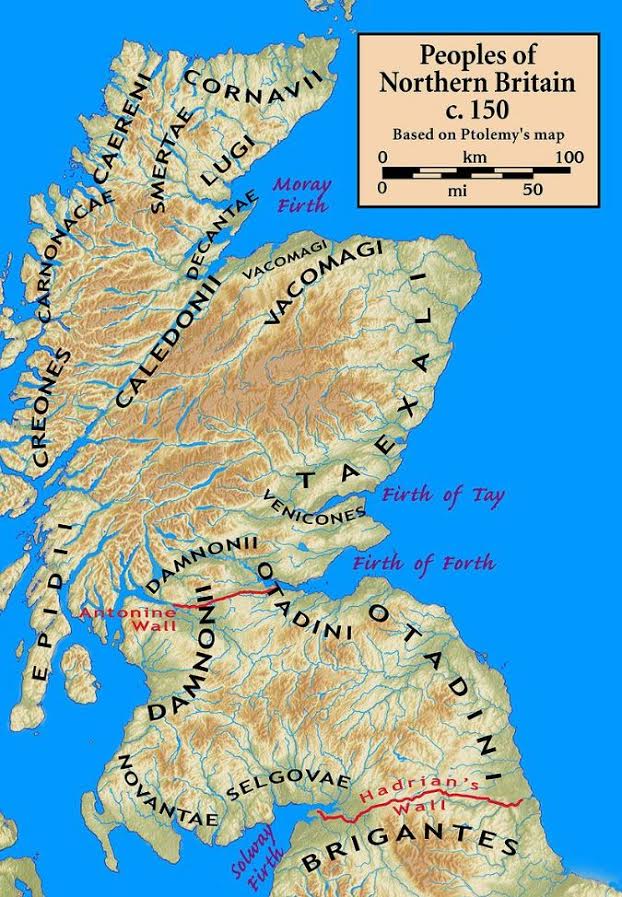
Tribes of Northern Britain according to Ptolemy (Wikimedia Commons)
On a couple of occasions in the second century, the tribes north of the wall rebelled against Rome, and by the time Septimius Severus had finally defeated the Parthian Empire in the East, the time had come for Rome to deal once-and-for-all with the tribes of Caledonia.
This was no small venture.
Severus marched into Caledonia with at least six legions, his Praetorian Guard, plus numerous auxiliary units and cavalry ala, to deal with the rebellious tribes.
In this major offensive, the legions had to deal with bad weather, rough terrain, mountains, bogs, and river fords, as they attempted to take back strategic positions Rome had once held in previous campaigns.
Rome’s foes were also cunning and highly skilled at their unique guerilla tactics, never meeting the legions in open, pitched battle. They were mostly infantry, but they also used war chariots. Their weapons often consisted of small round shields, short spears, and swords.
Their devices lured many a legionary to his doom too. Livestock would be used as bait to lure Roman troops into swamps or ambushes, and warriors would lie in wait submersed beneath the surface of water when the Romans were marching by.
It was all about hit and run and hacking away at the edges of Rome’s forces. And they were so good at it that, by the end of the campaign, the Romans are said to have lost around 50,000 men.
So who were these expert guerilla fighters who proved such a thorn in the side of Rome for almost the entirety of its time in Britannia and Caledonia?
Let’s find out.
Most of what we know about the names of the tribes at this time in Caledonia and northern Britannia comes down to us from Claudius Ptolemaeus, or Ptolemy as most know him.
Ptolemy was a Greco-Egyptian mathematician, astronomer, astrologer, and geographer who lived c. A.D.100-170. It is his work, known as Geographia, which compiles geographical coordinates and knowledge of the Roman Empire in the second century, and which mentions many of the tribes and locations we are dealing with during the Severan invasion of Caledonia.
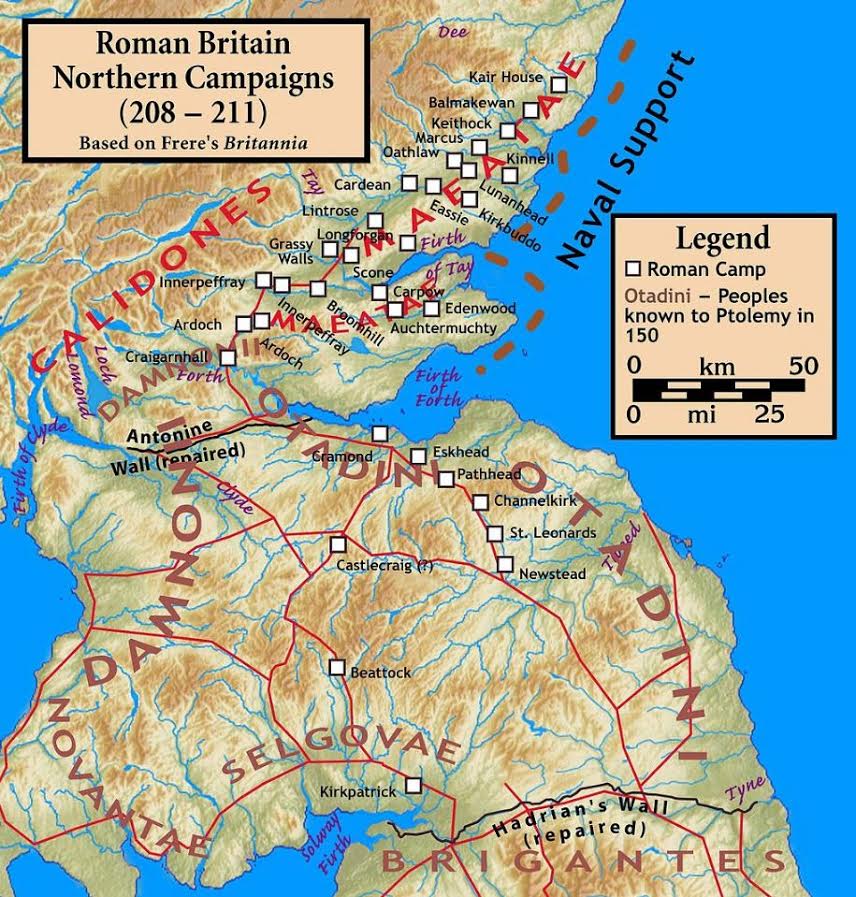
Severan Campaigns in Caledonia (Wikimedia Commons)
Other sources for places during this period and in this region are the Ravenna Cosmography, which is an early eighth century list of place-names from Ireland to India, and the second century Antonine Itinerary. The latter was created under Antoninus Pius and likely finalized under Caracalla at the beginning of the third century. The portion of the itinerary known as Iter Britanniarum was a list of Roman place names and roads in Britain.
Rome was anything but invincible in this fight, so we need to look first at those who fought alongside the legions in Caledonia.
One of Rome’s allies in this fight were the Votadini, and they play a large role in Warriors of Epona.
This tribe of Celtic Britons held the territory of what is now south-east Scotland and north-east England, and they had been Roman allies for generations by the time of the Severan invasion, and may well have been one of the key Romano-British fighting forces.
The Votadini came under Roman alliance in the mid-second century, and proved to be a great stabilizing entity between the Antonine and Hadrianic walls, mainly the region we know today as the Scottish Borders.
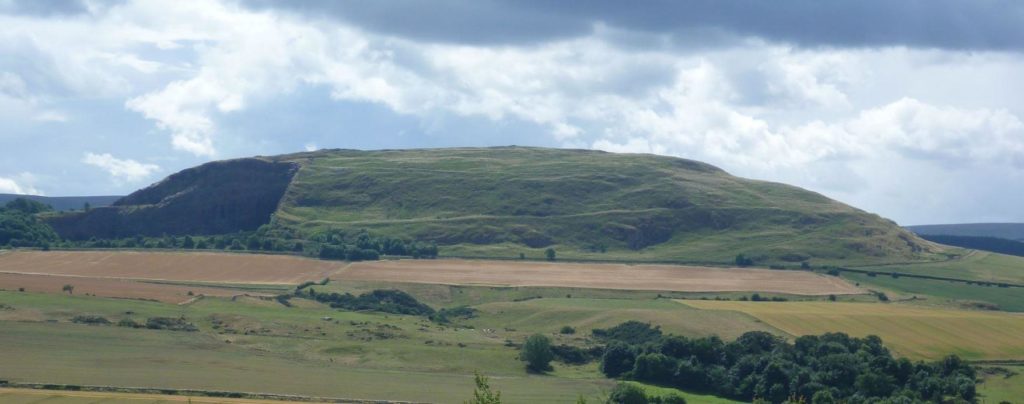
Dunpedyrlaw (Trapain Law) – Capital of the Votadini
Their capital, named ‘Curia’ by Ptolemy, was called Dunpendyrlaw, which meant the ‘fort of the spear shafts’. Today, the massive hill fort at this place is known as Traprain Law. This place was occupied by the Votadini and their descendants until about A.D. 400 when the capital was moved to Din Eidyn, that is, Castle Rock in Edinburgh.
One of the most magnificent finds from the Votadini capital of Dunpendyrlaw is a hoard of Roman silver plates, cups and more. Some believe this was given to the Votadini in thanks for service to Rome, others that it was a bribe to keep them in check and fulfilling their role as allies.

Trapain Law Treasure
The Votadini’s descendants were none other than the Gododdin, those Britons who made an heroic last stand at the battle of Catraeth around A.D. 600 when the Saxons were poised to overrun the island. This final battle is chronicled in the poem, Y Gododdin by Aneirin.
The poem was certainly an inspiration for me when I was writing about the Votadini in this book. It seems quite romantic in a sense, the Votadini, loyal Rome, standing against the enemy tribes after Rome pulled back from Antonine Wall.
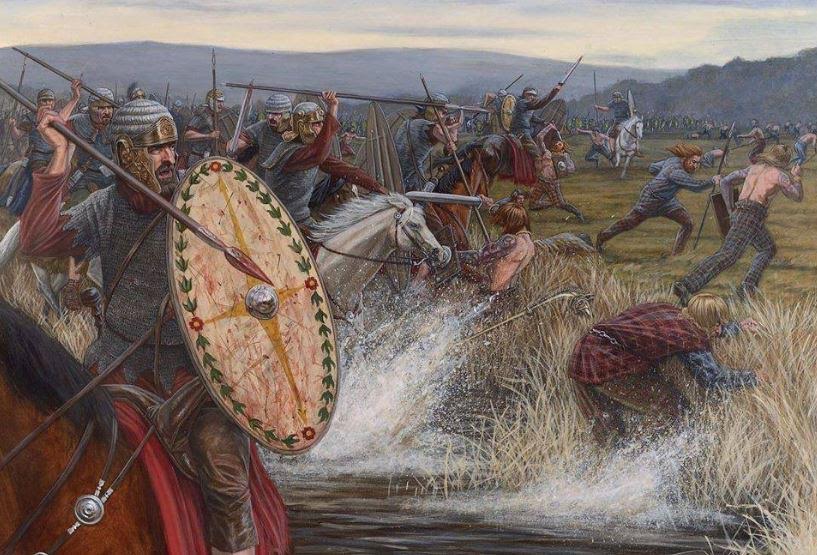
Artist impression of Roman cavalry ala engaging Caledonians
The other allies in this fight with Rome, although perhaps a little more reluctant, was a tribe known as the Venicones. Their lands covered what is basically modern Fife, in eastern Scotland, and where, funnily enough, my alma mater, St. Andrews University, is located.
The Venicones are known to us from Ptolemy who mentions a town by the name of ‘Orrea’ which many have come to identify as the Roman settlement of Horea Classis. This is believed to be the site of the Severan legionary base at Carpow, along the Tay estuary, and it is from here that the emperor likely oversaw the Caledonian campaign, when not in the northern capital of Eburacum (York).
The Venicones were in a tough position. On the one hand, they were neighbours with Rome’s enemies, the Caledonii to the West, and the Taexali to the North.
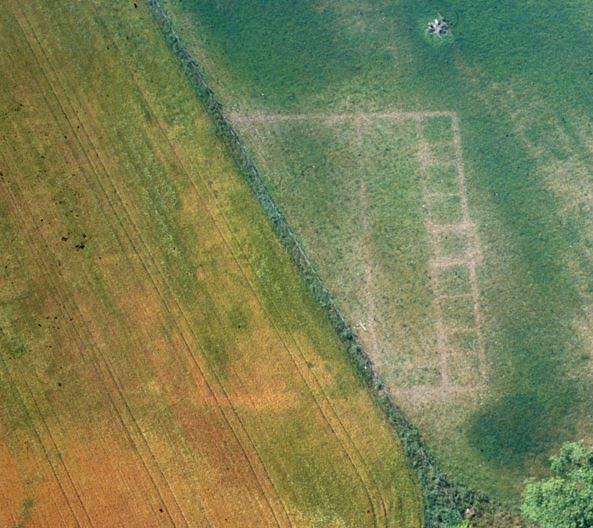
Crop marks showing outline of Roman Principia at Carpow
They chose to side with Rome in the fight, but one wonders how much of a choice that was? As it turned out, the legionary base and ports at Horea Classis (Carpow) and the forts of the Gask Ridge frontier (the topic of our next post), were all in the lands of the Venicones.
What must the Venicones have been thinking when they agreed, or were forced, to become a Roman client state?
I wouldn’t have wanted to be the one throwing those dice!
Ordnance Survey map extract (Gask ridge and Venicones lands)
Now we come to Rome’s adversaries in the Caledonian campaign.
Even though we have some hints from Ptolemy and the other sources, it is difficult to be exact in naming the tribes that Rome was fighting on this far northern frontier. Many Roman writers, including Cassius Dio, use the name ‘Caledonians’ for all the tribes rebelling against the Empire.
In writing Warriors of Epona, I had to pick and choose which tribes I would write about, and which to leave out.
There are three peoples in particular who may well have joined forces with larger groups but which I decided to leave out of the story specifically.
The first are the Novantae. These were a people of the second century who lived in modern Galloway and Carrick in south-western Scotland. The Saxon historian, Bede, refers to the Novantae as Picts in his history, but it is believed that they were a Brythonic people.
Another group I decided to leave out of the story were the Damnonii. These were Celtic Britons located in Strathclyde in southern Scotland. They are only mentioned by Ptolemy and there really is not enough information on them and their activities.
The third group I decided to leave out was the Maeatae. This group was larger, and believed by some to be a union of smaller tribes whose lands lay somewhere along the Antonine Wall, westward from Stirling. The little that I read about them indicates that they likely joined forces with the Caledonii in the rebellion of A.D. 210.

British warriors (illustrated by Angus McBride)
In Warriors of Epona, the Romans have to deal with two main adversaries in the Caledonian campaign – the Selgovae, and the Caledonii.
At the beginning of the book, Lucius Metellus Anguis and his Sarmatian cavalry ala are engaging the Selgovae in the lands around Trimontium, north of the wall.
The fighting has been brutal and the leader of the Selgovae ruthless in his campaign against Rome.
Who were the Selgovae?
They were a large tribe of Britons mentioned by Ptolemy in the late second century. Their territory covered south-west Scotland and what is Dumfriesshire today.
It is believed that they were related to the Brigantes, Rome’s old enemies south of Hadrian’s Wall.
The Selgovae, like many other British tribes, used chariots in warfare. They also lived in stone huts and had many hill forts across their lands. Their warlike demeanour and the strength of their fortresses made them an obvious target for Rome during successive campaigns. Like the Brigantes, the Selgovae were more troublesome than other tribes.
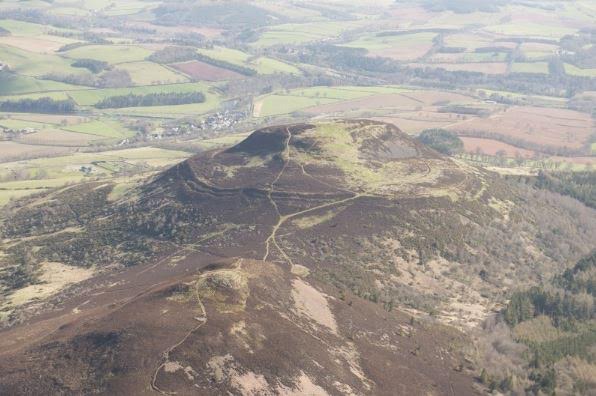
Aerial view of Eildon Hill North – Capital of the Selgovae
In a previous post, we have already discussed the legionary fortress at Trimontium, the place Lucius uses as a base in his fight against the Selgovae. But before Rome occupied the site, Eildon Hill North, one of Trimontium’s three peaks, was the main tribal centre of the Selgovae.
Writing about this group of warriors, making a last stand against Rome at the beginning of the story, was thrilling and bitter-sweet. They were a once-proud people, but, like many who stood against Rome, they had to face the harsh realities of the Empire.
The main opponents of Rome during the Caledonian campaigns of Septimius Severus, and in Warriors of Epona, were the Caledonii.
These were the indigenous people of what is now Scotland.
They were originally considered to be another group of Britons, but now it is more widely believed that they were the people who later came to be known as the Picts.
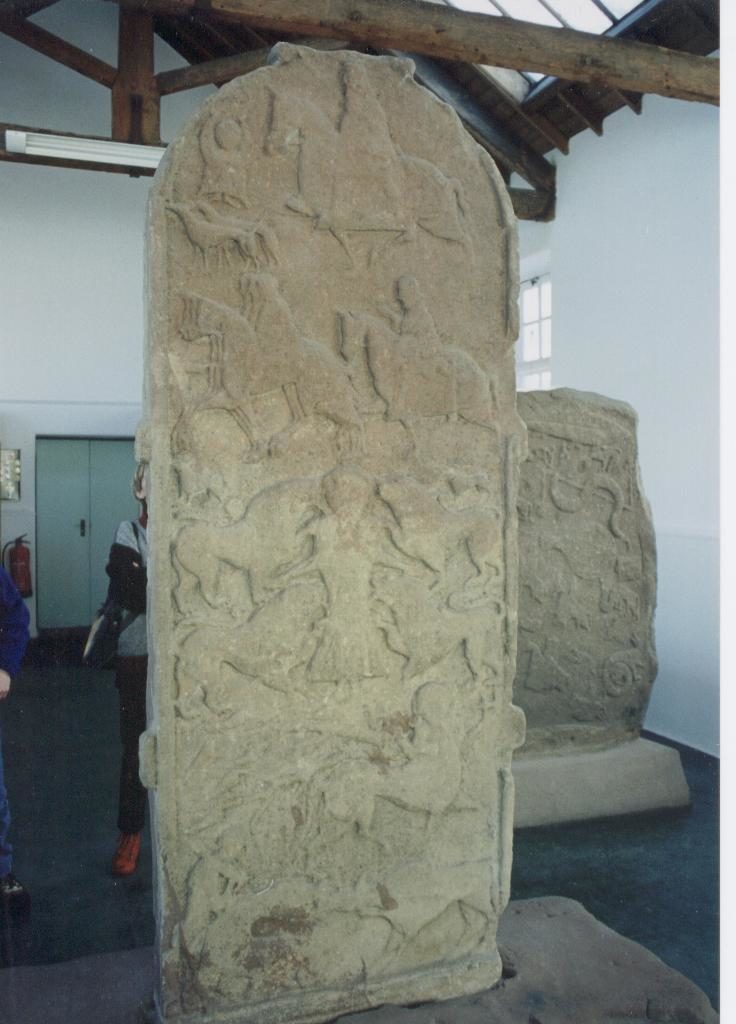
Pictish stone at the Meigle Museum in Strathmore, Scotland
The Caledonii may also have been a federation of many tribes in Scotland, as well as remnant forces fleeing north after being defeated by Rome in the South.
One thing is certain – Rome was a definite threat to all the northern tribes, and the scene was set for a brutal fight, with the Caledonii leading the charge.
The Caledonii were certainly a hearty people who lived in a very rugged world that included the Scottish Highlands. As the first century historian, Tacitus, points out, they had red hair and long limbs. Much later than Tacitus, Cassius Dio, our main source for the period, added a bit more colour to the picture of the Caledonii, saying that they:
…inhabit wild and waterless mountains and desolate and swampy plains, and possess neither walls, cities, nor tilled fields, but live on their flocks, wild game, and certain fruits; for they do not touch the fish which are there found in immense and inexhaustible quantities. They dwell in tents, naked and unshod, possess their women in common, and in common rear all the offspring. Their form of rule is democratic for the most part, and they are very fond of plundering; consequently they choose their boldest men as rulers. The go into battle in chariots, and have small, swift horses; there are also foot-soldiers, very swift running and very firm in standing their ground. For arms they have a shield and a short spear, with a bronze apple attached to the end of the spear-shaft, so that when it is shaken it may clash and terrify the enemy; and they also have daggers. They can endure hunger and cold and any kind of hardship; for they plunge into the swamps and exist there for many days with only their heads above water, and in the forests they support themselves upon bark and root…
(Cassius Dio, Roman History 12,1)
One must always take ancient writers’ descriptions with a grain of salt, of course, but if even a part of this description of the Caledonii is true, then the Romans must have felt like they were fighting ghosts as they marched into Caledonia.
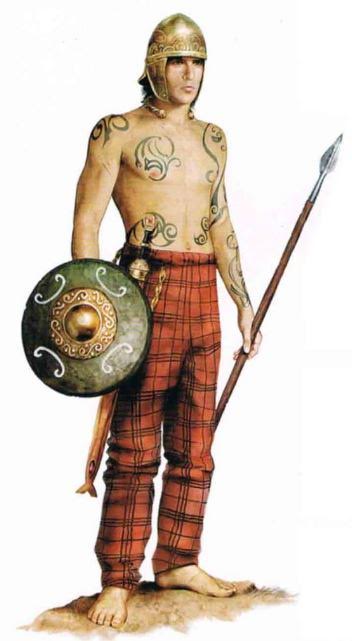
Artist impression of a Caledonian warrior
The Severan campaign was certainly not the first time Rome engaged the Caledonians. There were other campaigns which we shall look at in a later post in this blog series.
Prior to Severus’ invasion, the Caledonians rebelled in A.D. 180 when they travelled south and breached Hadrian’s Wall. And then in A.D. 197, the Caledonii, Brigantes, and Maeatae led another attack on the frontier.
At the time of these rebellions, Severus was campaigning against the Parthians in the East.
By the time A.D. 209 rolled around, Rome’s legions were set for the biggest offensive yet into Caledonia.
Once again, Cassius Dio gives us an account:
Severus, accordingly, desiring to subjugate the whole of it, invaded Caledonia. But as he advanced through the country he experienced countless hardships in cutting down forests, levelling the heights, filling up swamps, and bridging rivers; but he fought no battle and beheld no enemy in battle array. The enemy purposely put sheep and cattle in front of the soldiers for them to seize in order that they might be lured on still further until they were worn out; for in fact the water caused great suffering to the Romans, and when they became scattered, they would be attacked. Then, unable to walk, they would be slain by their own men, in order to avoid capture, so that a full fifty thousand died.
(Cassius Dio, Roman History 14,1)

Caledonia: The Scottish Highlands
Some believe that Septimius Severus actually wanted to settle the North and that there were plans for a city near the Tay estuary, but others stand firm in the belief that the goal of the Severan campaign was none other than the mass genocide of the Caledonii who had proved supremely troublesome to Rome for a long time.
Whatever the reasons for Severus’ invasion of Caledonia, one thing is certain – with their guerilla tactics, rough terrain, and sheer determination to keep Rome out of their lands, the Caledonii and their allies gave the men of the legions a fight for their lives.
We mustn’t think, however, that Rome was adrift and defenseless in Caledonia. On the contrary, the Empire dug in for a fight and, as part of Lucius’ mission in Warriors of Epona, they took back an old frontier to hem the Caledonians in on their highlands.
This battle line, this frontier, will be the subject of Part IV of The World of Warriors of Epona.
Thank you for reading.
Ancient Everyday: Medicus! – Physicians in the Roman Empire
Going to the doctor’s office is never something one looks forward to.
For most, myself included, it gets the heart rate and stress levels up to step into a building that’s full of ‘sick people’.
Sitting around in a waiting room with a group of scared, nervous, fidgety folks, is enough to drive you mad, and the sight of a white coat and stethoscope makes one want to run screaming from the building.
It was probably the same for our ancient Greek and Roman ancestors. Most civilians would have been loath to visit with a physician. It might not have been someone you wanted around, unless absolutely necessary.
‘Oh dear. That cough doesn’t sound good, my dear Septimius!’
Not so for the soldiers in the field.
I’m not an expert in ancient medical history, but I do know that the level of injury on an ancient battlefield would have been staggering. The sight or sound of your unit’s medicus would have been something sent from the gods themselves.
Imagine a clash of armies – thousands of men wielding swords, spears and daggers at close quarters. Then lob some volleys of arrows into the chaos. Perhaps a charge of heavy cavalry? How about heavy artillery bolts or boulders slamming into massed ranks of men?
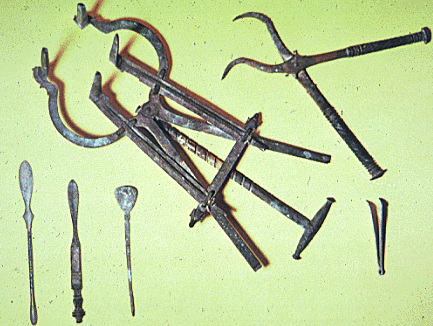
Ancient surgical instruments, including forceps
It would have been one big, bloody, savage mess.
Apart from the usual cuts, slashes, and puncture wounds, the warriors would have suffered shattered bones, fractured skulls, lost limbs, severed arteries, sword, spear and arrow shafts that pushed through armour on into organs.
If you weren’t dead right away, you most likely would have been a short time later.
This is where the ancient field medic could have made the difference for an army. He would have been going through numerous patients in a short period of time. He would have had to decide who was a lost cause, who could no longer fight, and who could be patched up before being sent back out onto the field of slaughter.
The medicus of a Roman legion was an unsung hero whose skill was a product of accumulated centuries of knowledge, study, and experience.
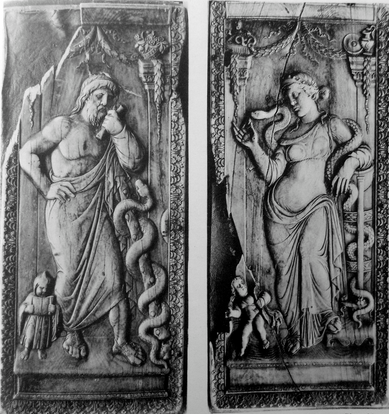
Asklepios and Igia
Many of the physicians in the Roman Empire were Greek, and that’s because Greece was where western medicine was born. Indeed, the ancient Greeks had patron gods of health and healing in the form of Asklepios, Igeia, and sometimes Apollo.
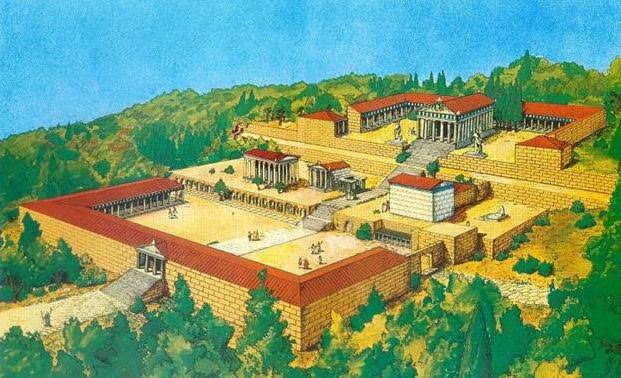
Artist rendering of the Asklepion of Kos
The greatest medical school of the ancient world was in fact on the Aegean island of Cos, where students came from all over the Mediterranean world to learn at the great Asklepion. Hippocrates himself, the 5th century B.C. ‘father of medicine’, was from Cos and said to be a descendant of the god Asklepios himself.
When it comes to Roman medicine, much of it is owed to what discoveries and theories the Greeks had developed before, but with a definite Roman twist.

Hippocrates
The fusion of Greek and Roman medicine in the Empire consisted of two parts: the scientific, and the religious/magical.
The more scientific thinking behind ancient medical practices is a legacy owed to the Greeks, who separated scientific learning from religion. The religious aspects of medicine in the Roman Empire were a Roman introduction.
Because of this fusion of ideas and beliefs, you could sometimes end up with an odd assortment of treatments being prescribed.
‘To alleviate your hypertension over your new business venture, you should take three drops of this tincture before you sleep. You should also sacrifice a white goat to Janus as soon as possible.’
Many Roman deities had some form of healing power so it depended on one’s patron gods, and the nature of the problem, as to which god would receive prayers or votive offerings over another. Amulets and other magical incantations would have been employed as well.

Roman surgical instruments
Romans had a god for everything, and soldiers were especially superstitious.
Greek medical thought rejected the idea of divine intervention, opting more for practicality in the treatment of wounds, and injuries; cleaning and bandaging wounds would have been more logical than putting another talisman about the neck.
All the gods were to be honoured, but in the Greek physician’s mind they had much better things to look after than the stab wound a man received in a Suburan tavern brawl.
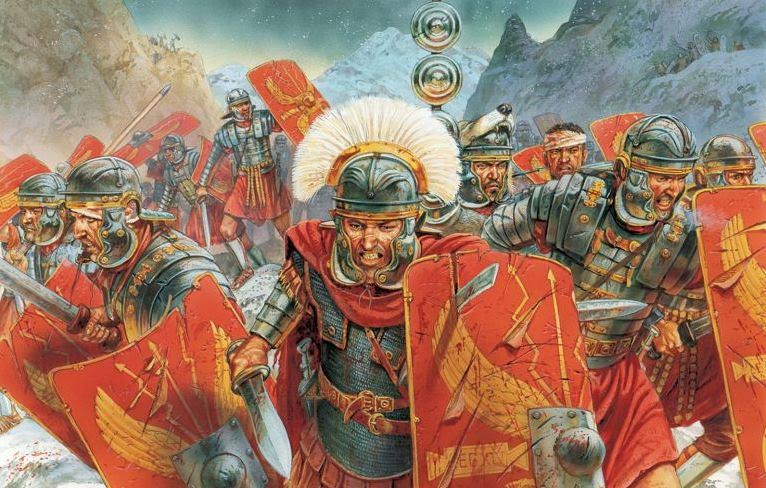
Roman Legionaries (illustrated by Peter Dennis)
For the battlefield medicus, things must have been much simpler than for the physician who was trying to diagnose mysterious ailments. They were faced mostly with physical wounds and employed all manner of surgical instruments such as probes, hooks, forceps, needles and scalpels.
Removing a barbed arrowhead from a warrior’s thigh must have required a little digging.
Of course, in the Roman world, there was no anaesthetic, so successful surgeons would have had to have been not only dexterous and accurate, but also very fast and strong. Luckily, sedatives such as opium and henbane would have helped.
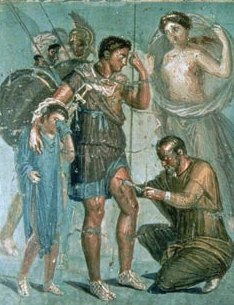
Medic helping a warrior tend a wound
When it came to the treatment of wounds, a medicus would have used wine, vinegar, pitch, and turpentine as antiseptics. However, infection and gangrene would have meant amputation. The latter was probably terrifyingly frequent for soldiers, many of whom would end up begging on the streets of Rome.
It is interesting to note that medicine was one of the few professions that were open to women in the Roman Empire. Female doctors, or medicae, would also have been mainly of Greek origin, and either working with male doctors, or as midwives specializing in childbirth and women’s diseases and disorders. When it came to the army however, most doctors would have been male.
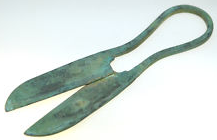
Roman shears
Army surgeons played a key role in spreading and improving Roman medical practice, especially in the treatment of wounds and other injuries. They also helped to gather new treatments from all over the Empire, and disseminated medical knowledge wherever the Legions marched. Many of the herbs and drugs that were used in the Empire were acquired by medics who were on campaign in foreign lands.
Early on, physicians did not enjoy high status. There was no standardized training and many were Greek slaves or freedmen. This began to improve, however, when in 46 B.C. Julius Caesar granted citizenship to all those doctors who were working in the city of Rome.
This last point really hits home when it has become common knowledge that foreign doctors who come to our own countries today find themselves driving taxis or buses because they are not allowed to practice.
Modern governments, take your cue from Caesar!
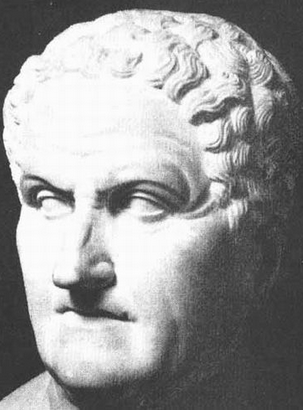
Galen
One of the most famous physicians of the Roman Empire is Galen of Pergamon (A.D. 129-c.199). Galen was a Greek physician and writer who was educated at the sanctuary of Asklepios at Pergamon in Asia Minor.
After working in various cities around the Empire, Galen returned to his home town to become the doctor at the local ludus, or gladiatorial school. He grew tired of that work and moved to Rome in A.D. 162 where he gained a reputation among the elite. He subsequently became the personal physician of the Emperors Marcus Aurelius, Commodus, and for a short time, Septimius Severus.
Galen’s work and writings provided the basis of medical teaching and practice on into the seventeenth century. No doubt many an army medicus referred to Galen’s work at one point or another.
Galen is also an important character in A Dragon among the Eagles, the FREE prequel in the Eagles and Dragon series. In the book, Galen, an old friend and colleague of Lucius Metellus’ late tutor, presents Lucius with a choice that could well change the direction of Lucius’ life. In fact and fiction, Galen is a fascinating person of history.

Re-created ancient surgical instruments
I’ve but barely scratched the vast surface of this topic.
For some, there is this assumption that ancient medicine was somehow false, crude and barbaric. But modern western medicine owes much to the Greeks and Romans, civilian and military, who travelled the Empire caring for their troops and gathering what knowledge and knowhow they could.
The fusion of science, religious practice, and magic provides for a fascinating mix. In truth, medical practices in medieval Europe might have been more barbaric than in the ancient world.
Thank you for reading, and may Asklepios, Igeia and Apollo grant you good health!

12th century mural of Galen and Hippocrates in conversation
The World of A Dragon among the Eagles – Part IV – Cities Under Siege
One of the great things about reading and writing historical fiction is that one is given the chance to journey to a time and place far away from the modern world.
In this fourth part of The World of A Dragon among the Eagles, we’re going on location to some of the places where the action takes place, some of which, sadly, are still making headlines today.
This won’t be an in-depth look at these ancient cities, for their histories are long and varied, and they each deserve their own a book. Here, we’re just going to take a brief look at their place in this story.
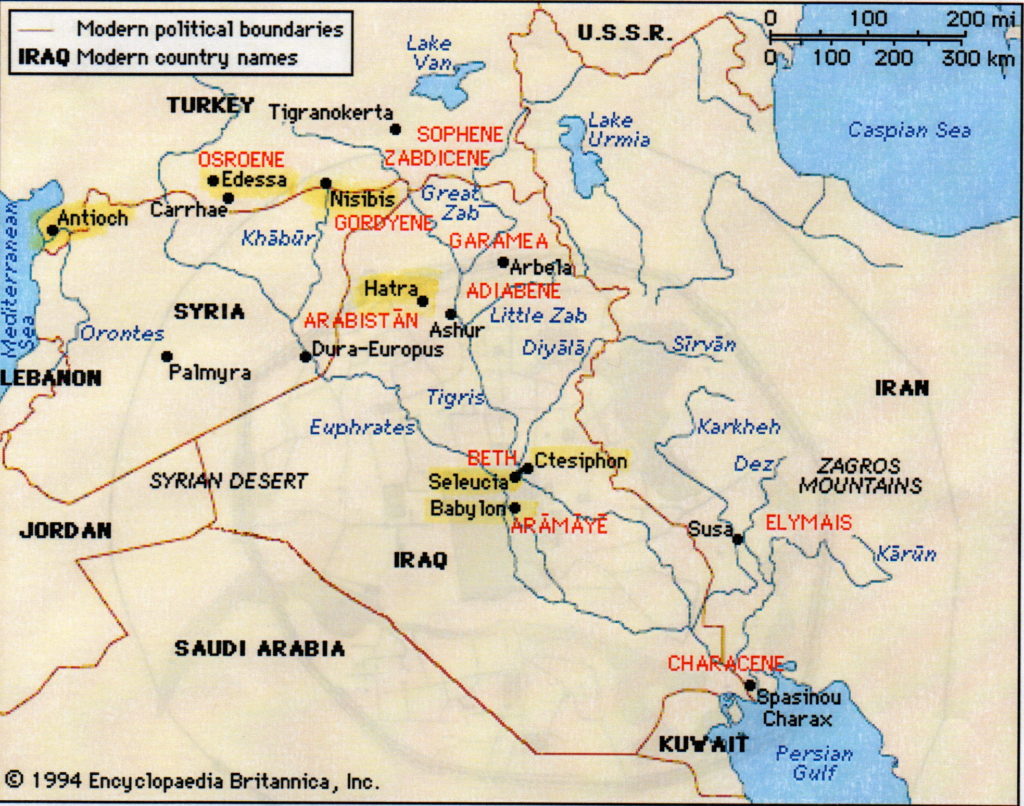
Sites where A Dragon among the Eagles takes place
The first third of A Dragon among the Eagles takes place in Rome, then Athens, and a little at Amphipolis which has gained recent fame for the massive tomb and the excavations there which have been linked to the period of Alexander the Great.
However, we are not going to look at Rome and Athens, as we visit those cities much more in Children of Apollo and Killing the Hydra, the sequels to A Dragon among the Eagles. If you would like to read more about Amphipolis, you can read this BLOG POST HERE.
For this blog, we are mainly concerned with the cities where Lucius Metellus Anguis, our protagonist, gets his first taste of war with the Legions.
Mesopotamia is said to be the cradle of civilization, a land of alternating fertility and desert where the first cities were built, and empires made. It also was, and is, a land of war, a land of terrible beauty.

Trooper in modern Iraq
For millennia, successive civilizations have fought over this rich land, a land from which Alexander the Great had decided to rule his massive empire.
In A Dragon among the Eagles, Lucius Metellus Anguis’ legion arrives at the port of Antioch where Emperor Severus has assembled over thirty legions on the plains east of the city.
Antioch, which was then located in Syria, now lies in modern Turkey, near the city of Antyaka. It was founded in the fourth century B.C. by one of Alexander’s successor-generals, Seleucus I Nicator, the founder of the Seleucid Empire.
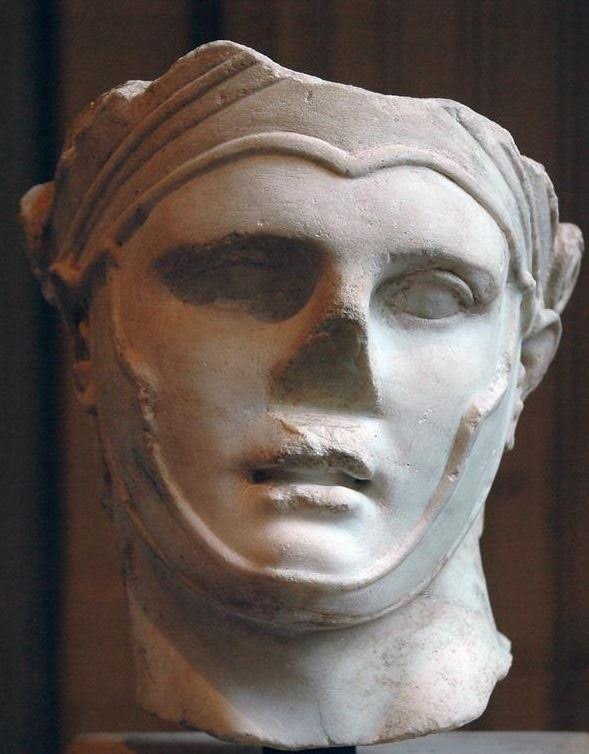
Seleucus I Nicator
Seleucus named this city after his son, Antiochus, a name that would be taken by later kings of that dynasty.
Antioch was called the ‘Rome of the East’, and for good reason. It was rich, mostly due to its location along the Silk Road. Indeed, Antioch was a sort of gateway between the Mediterranean and the East, with many goods, especially spices, travelling through it. It is located on the Orontes river, and overlooked by Mt. Silpius.
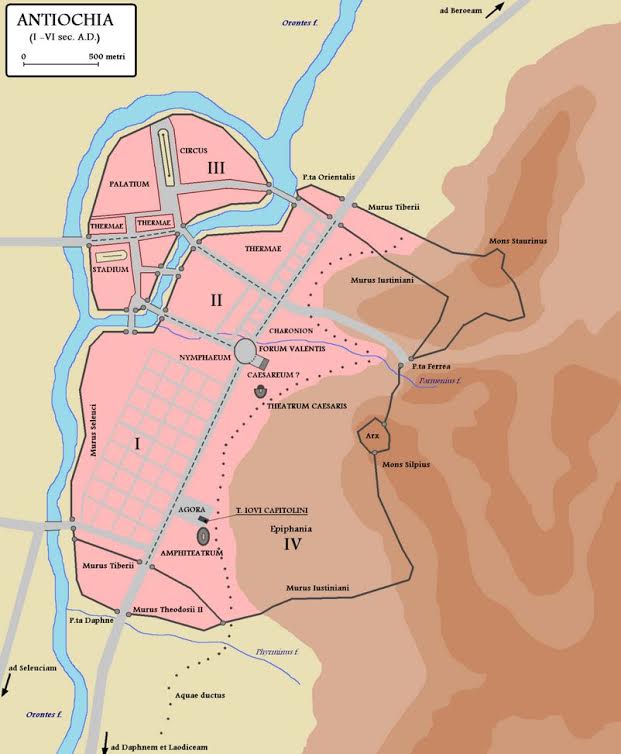
Antioch in the Roman Empire
In the book, we catch a glimpse of this Ancient Greek city that was greatly enhanced by the Romans who saw much value in it. Actually, most of the development in Antioch took place during the period of Roman occupation. Enhancements included aqueducts, numerous baths, stoas, palaces and gardens for visiting emperors, and perhaps most impressive of all, a hippodrome for chariot racing that was 490 meters long and based on the Circus Maximus in Rome.
Antioch, during the late second century A.D., rivalled both Rome and Alexandria. It was a place of luxury and civility that was in stark contrast to the world of war where the legions were headed.
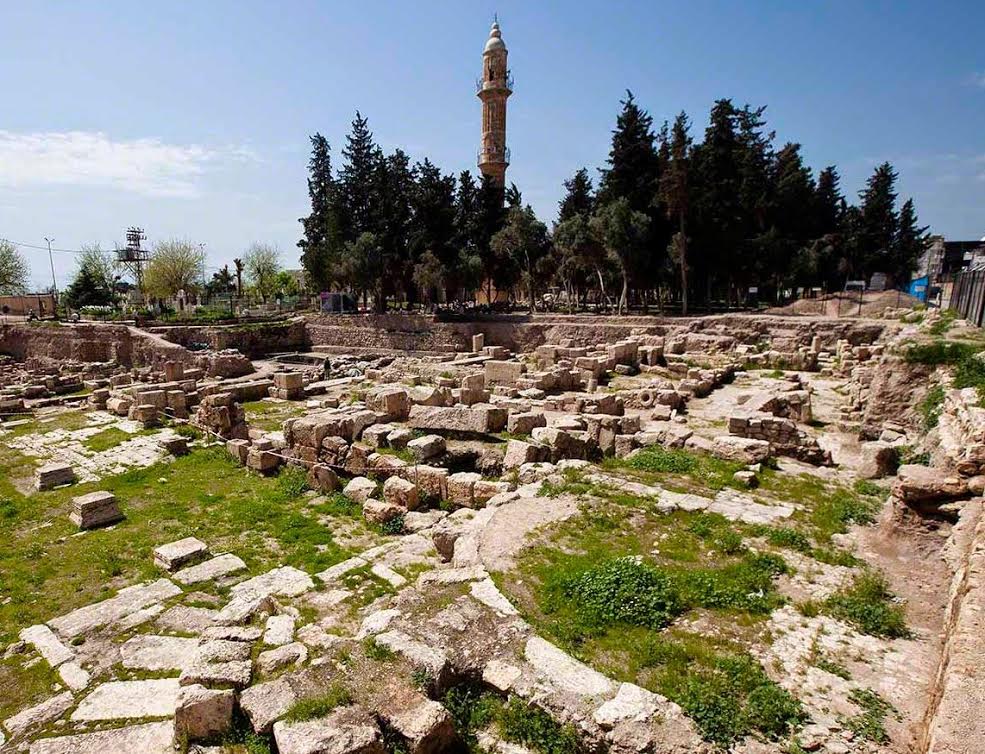
Some ruins of Nisibis today
In writing A Dragon among the Eagles, I have followed the itinerary presented to us by Cassius Dio, the main source for this period in Rome’s history and the Severan dynasty. So, the order in which we are looking at these locales is roughly the order in which Severus’ legions are supposed to have attacked them.
The first real battle in the book, and the first time our main character experiences battle, is at the desert city of Nisibis.
At the time, Nisibis was under Roman control. However, that control was about to break according to Dio, as the Romans inside were just holding onto it. This is due mainly to the leadership of the Roman general, Maecius Laetus, whom we meet in the story.
Laetus managed to hold the defences of Nisibis until Severus’ legions showed up, and was hailed as a hero for it.
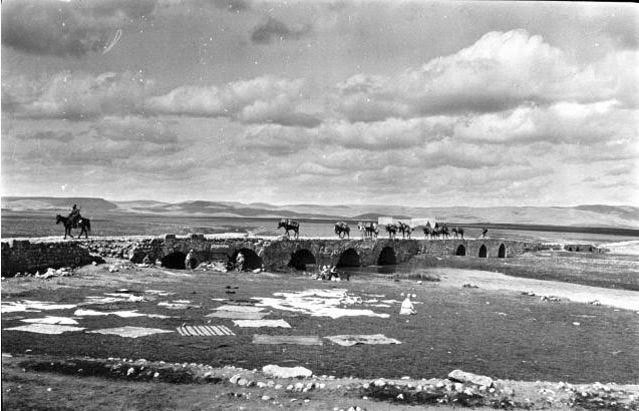
Nisibin Bridge – Gertrude Bell’s caravan crossing bridge.
Nisibis was situated along the road from Assyria to Syria, and was always an important centre for trade. This was the only spot where travellers could cross the river Mygdonius, which means ‘fruit river’ in Aramaic. Today it is located on the edge of modern Turkey.
Early in its history, Nisibis was an Aramaen settlement, then part of the Assyrian Empire, before coming under the control of the Babylonians. In 332 B.C. Alexander the Great, and then throughout the Roman-Parthian wars, it was captured and re-captured, over and over.
Such is the fate of strategically placed settlements, especially when they are located along the Silk Road.

Ruins of Edessa
From the bloody fighting in Nisibis, Severus’ forces then moved into the Kingdom of Osrhoene and the upper Mesopotamian city of Edessa, located in modern Turkey.
Edessa was originally an ancient Assyrian city that was later built up by the Seleucids.
Edessa’s independence came to an end in the 160s A.D. when Marcus Aurelius’ co-emperor, Lucius Verus, occupied northern Mesopotamia during one of the Roman-Parthian wars.
From that point on, Osrhoene was forced to remain loyal to Rome, but things changed when the civil war broke out between Severus, Pescennius Niger, and Clodius Albinus. Osrhoene threw their support behind Niger, who was then governor of Syria.
When Severus came out the victor in the civil war, it was inevitable that Edessa and Osrhoene would have to face the drums of war.
Edessa was where King Abgar of Osrhoene, who was sympathetic to the Parthians, was holed up as Severus’ legions advanced.
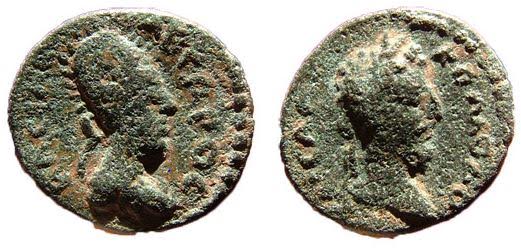
King Abgar of Osrhoene and Commodus
One has to wonder what King Abgar was thinking as Severus approached this ancient city. Whatever it was, and whatever he said to the Roman Emperor when he arrived, it must have been acceptable, for Abgar was permitted to keep his throne as a client king of the Empire.
There was a siege, but it seems that with King Abgar accepting Rome’s overlordship, and Severus’ need to move south, this is why the Osrhoenes escaped any large scale retribution.
In a way, it was not so for Lucius Metellus Anguis, for whom Edessa proves to be a harsh and enlightening experience.
At this time, Septimius Severus had his sights set on southern Mesopotamia and the great cities of Seleucia, Babylon, and the Parthian capital of Ctesiphon.

Ancient Babylon
The legions made their way south, directly for Seleucia-on-Tigris.
Seleucia, as the name suggests, was built by the Seleucus I Nicator in 305 B.C. as the capital of his empire. It was located sixty kilometers north of Babylon, and just across the Tigris River, on the west bank, from Ctesiphon. Today, Seleucia is located in modern Iraq, thirty kilometers south of Baghdad, and in its day, it was a major city in Mesopotamia.
It was a great Hellenistic city in the third and second centuries B.C., with a rich mixture of Greco-Mesopotamian architecture, and walls enclosing a full 1,400 acres as well as a population of 60,000 people.
When the Parthians took Seleucia, the capital was moved across the river to Ctesiphon and, though the city remained in use and inhabited, it went into a slow decline.
During the Roman-Parthian wars, Seleucia was burned by Trajan, rebuilt by Hadrian, and then destroyed again. Like a battered boxer with heart, it kept rising from the ground until there was no more will to keep it alive.
By the time Severus’ legions were marching on Seleucia, the Parthians had abandoned it completely, giving the Romans a foothold on the Tigris River, opposite their capital.
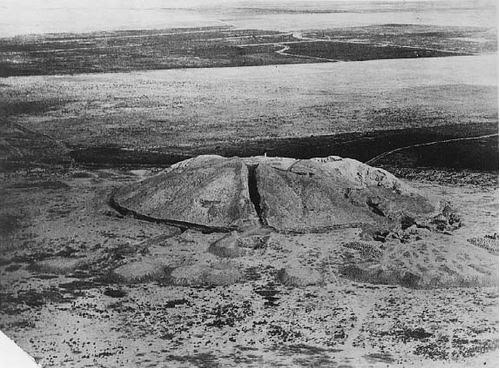
Seleucia on Tigris c.1927
Ctesiphon would have to wait, however, for there was another magnificent and symbolic prize within Severus’ grasp at that time – Babylon.
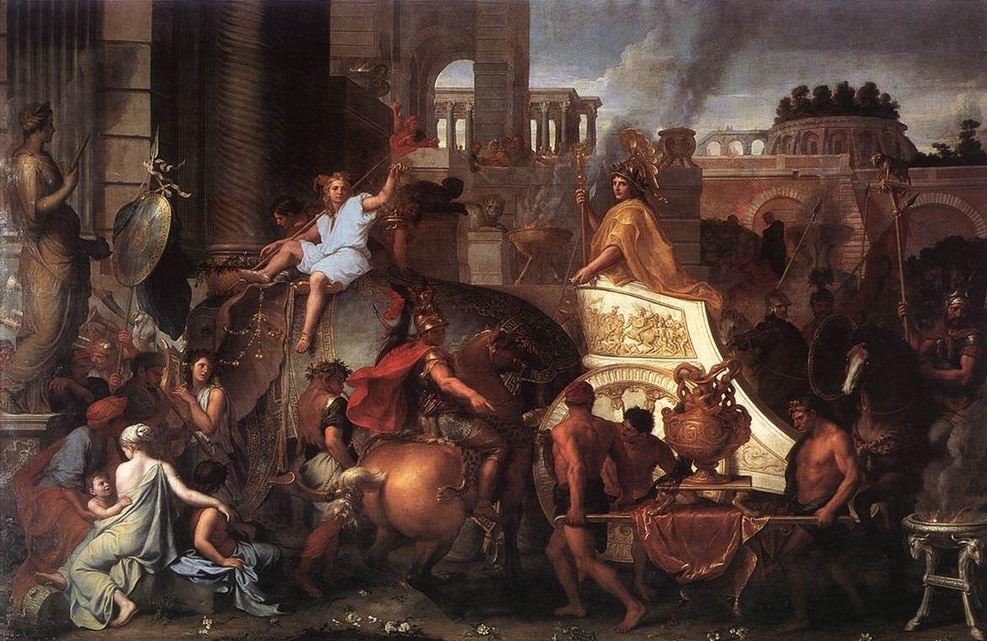
Alexander entering Babylon (Charles Le Brun)
I find that when I utter the name of Babylon, I get chills. Think about it, this is one of the most famous of ancient cities! This was the place that welcomed Alexander the Great with open arms and triumph, the place from which he had decided to rule his titanic empire, and the place where he died.
Babylon was located on the fertile plain between the Tigris and Euphrates rivers. Actually, part of it was built over the Euphrates.
The original settlement of Babylon is said to date to about 2300 B.C when it was part of the Semitic Akkadian Empire. It was fought over and rebuilt, and in about 1830 B.C. it became the seat of the first Babylonian dynasty.
From about 1770 B.C. to 1670 B.C. Babylon was the largest city in the world with a population of over 200,000.
Perhaps the most famous period in Babylon’s long and ancient history is during what is known as the Neo-Babylonian Empire (626-539 B.C.), and especially the reign of King Nebuchadnezzar II (605-562 B.C.)
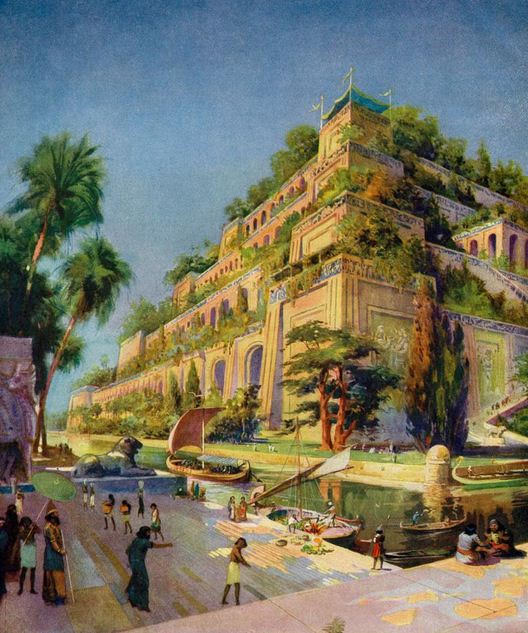
Then Hanging Gardens of Babylon
Nebuchadnezzar was a great builder, and it was he who made Babylon one of the most beautiful cities of the ancient world, home to one of the Seven Wonders.
He built the famed Hanging Gardens of Babylon for his Median wife who missed the lushness of her homeland, and he also constructed the giant ziggurat of Etemenanki beside the temple of Marduk.
Babylon at this time must have been a sort of paradise on earth with the ziggurat as the doorway to the heavens. The walls of the city too, were so big that it was said that two chariots could pass each other as they drove along the top of the walls.
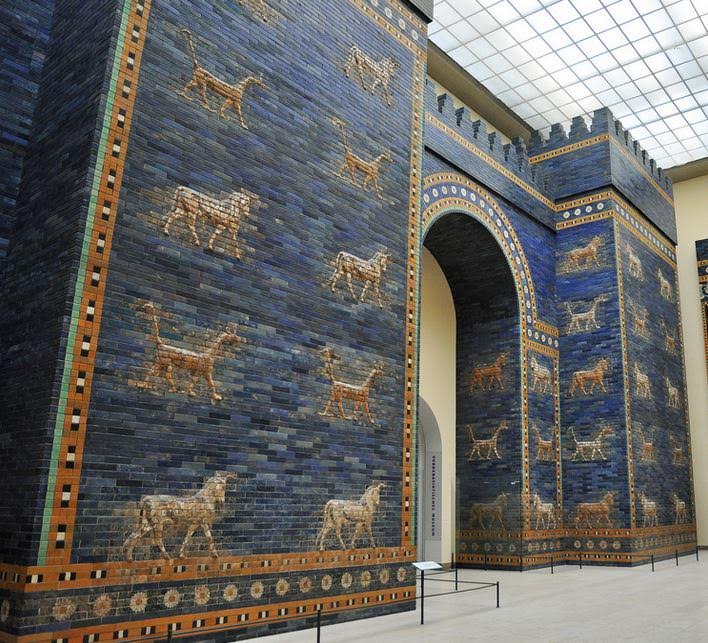
Ishtar Gate of Babylon at Pergamon Museum Berlin
When the Seleucids came onto the scene and Babylon’s power and beauty faded into history, the population was moved to Seleucia, one supposes to bolster the economy of the great new capital envisioned by Seleucus I.
There was a lot of history at Babylon, and it’s not improbable that all the Romans who marched through there thought of Alexander as they approached, including Severus.
But Babylon was a very different place when the legions marched on it late in A.D. 198.
Just as Seleucia had been abandoned, so too was Babylon. And so, with barely a drop of blood being shed, the Romans walked into this ancient city of faded glory in stern silence, their prize almost too easily won.
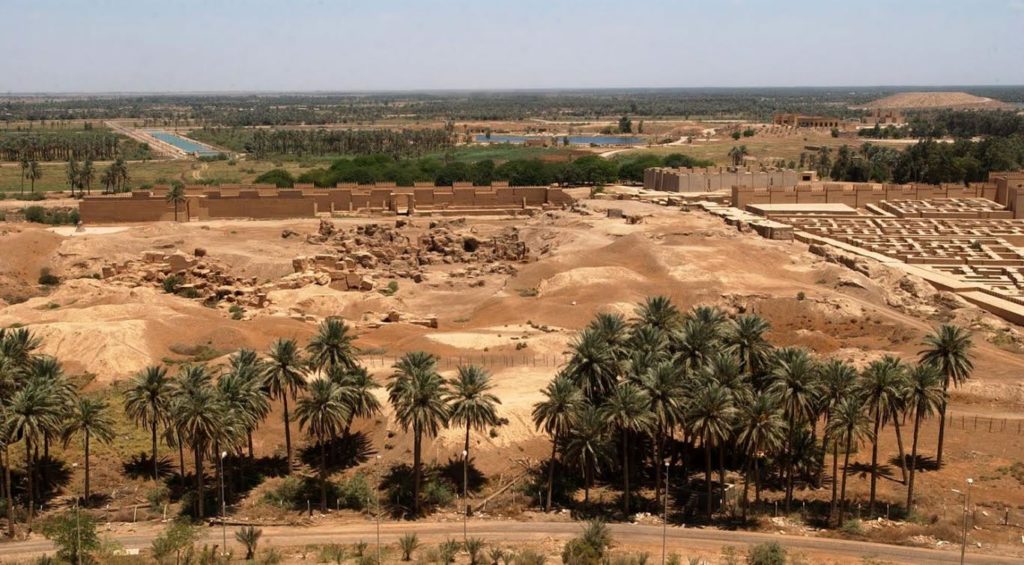
Ruins of Babylon (Wikimedia Commons)
It was time for the real battle.
With Seleucia and Babylon basically given over to Rome and Severus’ legions, the forces of Rome and Parthia converged on the capital of Ctesiphon.
This time, the Parthians were waiting.
Ctesiphon, compared to the other cities we have seen, was a relatively new settlement on the east bank of the Tigris River, facing Seleucia. It was built around 120 B.C. on the site of a military camp built by Mithridtes I of Parthia. At one point in time, it merged with Seleucia to form a major metropolis straddling the river.
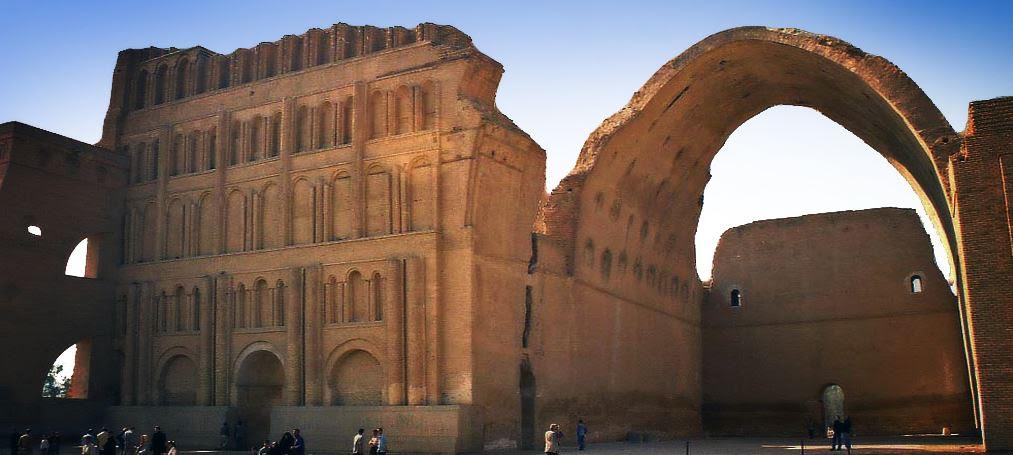
Ctesiphon’s ruins today, including the great audience hall.
During the Roman-Parthian wars, Ctesiphon did not have an easy time of it. It was captured by Rome five times in its history, the last time by Septimius Severus who burned it to the ground and enslaved much of the population.
The Greek geographer, Strabo, describes the foundation of Ctesiphon here:
In ancient times Babylon was the metropolis of Assyria; but now Seleucia is the metropolis, I mean the Seleucia on the Tigris, as it is called. Nearby is situated a village called Ctesiphon, a large village. This village the kings of the Parthians were wont to make their winter residence, thus sparing the Seleucians, in order that the Seleucians might not be oppressed by having the Scythian folk or soldiery quartered amongst them. Because of the Parthian power, therefore, Ctesiphon is a city rather than a village; its size is such that it lodges a great number of people, and it has been equipped with buildings by the Parthians themselves; and it has been provided by the Parthians with wares for sale and with the arts that are pleasing to the Parthians; for the Parthian kings are accustomed to spend the winter there because of the salubrity of the air, but they summer at Ecbatana and in Hyrcania because of the prevalence of their ancient renown.
Being built by the Parthians, Ctesiphon, unlike Seleucia, Babylon, or the other places we have discussed, was a Parthian invention. Probably the greatest structure of this capital was the great, vaulted audience chamber, or hall, which seems to be all that remains today. In truth, there is very little information on other structures within Ctesiphon itself.
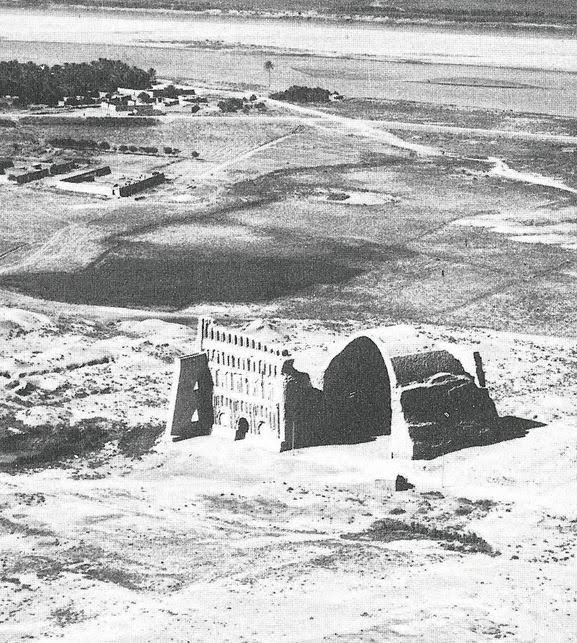
Ctesiphon from the air
The final sack of Ctesiphon by Severus’ legions in A.D. 197 was a brutal affair, and one that ended that city and provided the death blow to the Parthian Empire.
In A Dragon among the Eagles, the Roman attack on Ctesiphon is one of the major battle scenes which I had envisioned a long time ago. Imagine, almost thirty legions lined up on the other side of the river with the entire force of Parthian horse archers and heavy cataphracts awaiting them.
The Romans had to cross the river, gain a beachhead, and then push forward. In the end, Rome prevailed, but at great cost to the troops.
One would have thought that with the sacking of the Parthian capital, all would be finished, but there was another score for Rome to settle, another city to take – the desert city of Hatra.
As I write this, I have a pang of sadness, for while I was researching and writing about Hatra and the Roman siege there, extremist groups in the Middle East were in the process of the wonton destruction of this ancient heritage site. Writing this part of the book was indeed an odd experience.
Hatra is located in modern Iraq, about 290 kilometers north of Baghdad, on the Mesopotamian desert, far from either the Tigris or Euphrates. It was built by the Seleucids, those Hellenistic giants we’ve heard so much about, around the third century B.C.
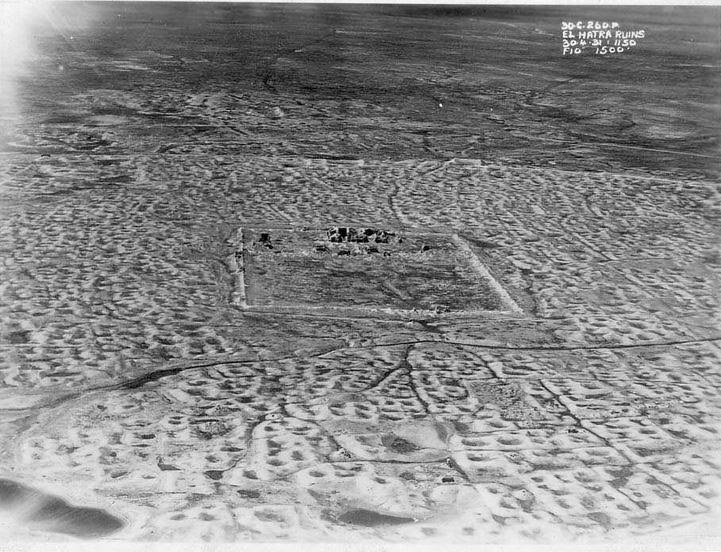
Hatra old survey aerial photo
It flourished under the Pathians too as a center of religion and trade during the first and second centuries A.D. What is fascinating about Hatra is the harmony and religious fusion it represented. This remote desert city was a place where Greek, Mesopotamian, Canaanite, Aramean, and Arabian religions lived peacefully side-by-side. And for 1,400 years it was protected and preserved by Islamic regimes, until it was destroyed in 2015.
It was the best-preserved Parthian city in existence.
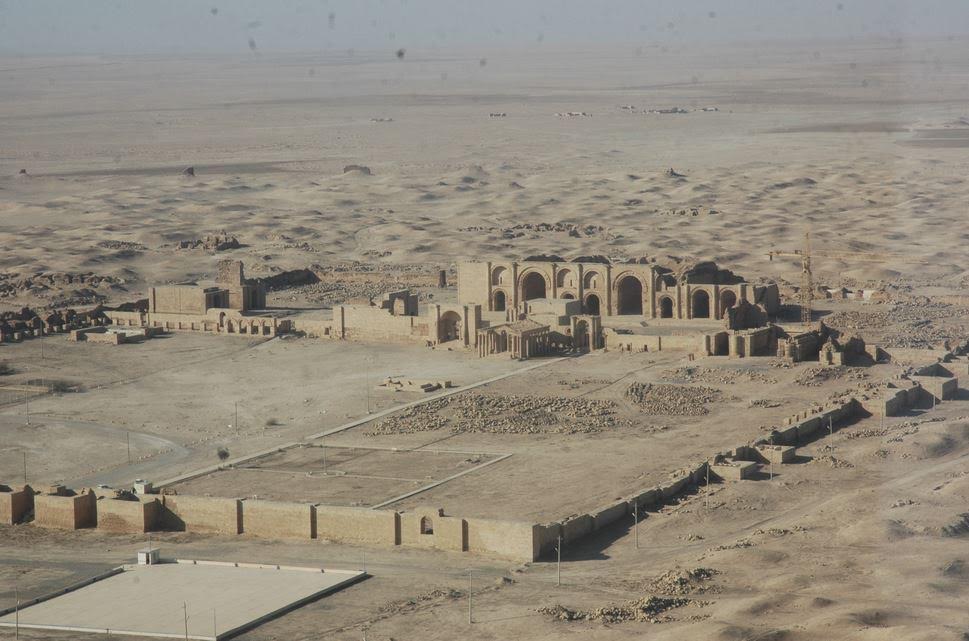
Hatra before the 2015 destruction
When Septimius Severus turned his attention on Hatra after the fall of Ctesiphon, it was with a goal of doing what no other Roman, even Trajan, had been able to do.
It was personal too, for Hatra and its ruler, Abdsamiya, had supported Pescennius Niger against Severus in the civil war.
But there were a few reasons Hatra had withstood Roman sieges, including the two attempted by Severus in his Parthian campaign.
First of all, Hatra was remote, stranded out in the desert with its own water source within the walls, but none without. The nearest water was over forty miles in any direction. A legion could only march a maximum of twenty-five miles in one day. So, thirst for those laying siege was a big factor.
Then there were the walls – two of them. Hatra was protected by immense, circular, inner and outer walls, the diameter of which was 2 kilometers, or 1.2 miles. Along these massive walls were 160 towers, making this island fortress of the sand seas no easy target.

Hatra Map (with temples labelled)
At Hatra’s heart were the sacred buildings of the gods of various religions, gods whom many believed protected the city from attack.
The temples within Hatra covered a total of 1.2 hectares, and that area was dominated by the Great Temple of Bel which was about 30 meters high.
Hatra withstood two major attacks by Roman emperors, Trajan and Severus. Every time, Hatra’s walls, and her gods, turned Rome back.
Cassius Dio describes Severus’ last siege of Hatra:
He himself made another expedition against Hatra, having first got ready a large store of food and prepared many siege engines; for he felt it was disgraceful, now that the other places had been subdued, that this one alone, lying there in their midst, should continue to resist. But he lost a vast amount of money, all his engines, except those built by Priscus, as I have stated above, and many soldiers besides…
When the walls were breached, Severus gave the Hatrans time to consider surrender, as he respected the religious importance of the place, especially the temple of the Sun God. But the Hatrans were stubborn, and the troops were fed up:
Thus Heaven, that saved the city, first caused Severus to recall the soldiers when they could have entered the place, and in turn caused the soldiers to hinder him from capturing it when he later wished to do so [threat of mutiny].
Once again, Hatra resisted being conquered by Rome, making it the only place Severus’ legions were not able to take.
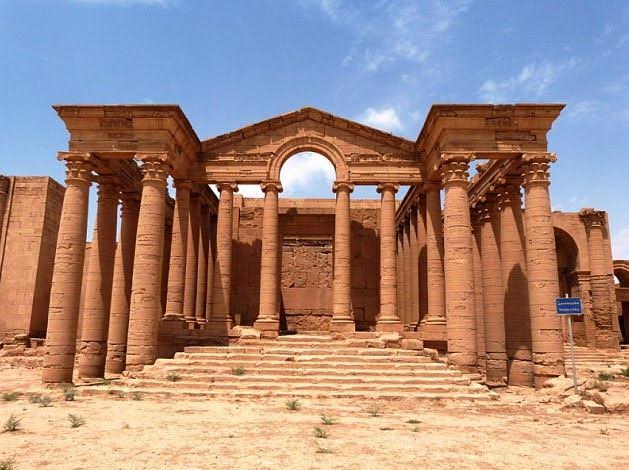
One of Hatra’s many magnificent temples
It is sad that, in light of the events of 2015, it seems Hatra’s gods finally deserted it.
To see more of Hatra before its destruction, CLICK HERE to watch the UNESCO video.
I hope you’ve enjoyed this march with the legions! In the next post, we’ll be going somewhere more civilized – the City of Alexander the Great!
This past week has been a good one for A Dragon among the Eagles, for in the UK it became an Amazon #1 Bestseller in three categories, including Historical Fantasy. It is also climbing in the Amazon US charts too, so thank you to everyone for supporting the book!
For those of you who prefer to read paperbacks, A Dragon among the Eagles is now available in trade paperback format from either Amazon or Create Space.
And as ever, thank you for reading.
Facing Fear with the 300 Spartans
Hear your fate, O dwellers in Sparta of the wide spaces;
Either your famed, great town must be sacked by Perseus’ sons,
Or, if that be not, the whole land of Lacedaemon
Shall mourn the death of a king of the house of Heracles,
For not the strength of lions or of bulls shall hold him,
Strength against strength; for he has the power of Zeus,
And will not be checked till one of these two he has consumed.
Thus spake the the Oracle at Delphi, long ago, as recorded by Herodotus, the ‘father of history’, in Book 7 of The Histories. This was the prophecy that was given prior to the Greek stand at Thermopylae in which 300 Spartans and 700 men of Thespiae made one of the most heroic stands in the history of the world. Roughly one thousand Greek hoplites defended the pass known as the ‘hot gates’ (photo above) for three days against an army of about 1 million under Xerxes of Persia. This is a deed of heroism by which all others have been measured in western history ever since, and it echoes across the ages, unspoilt, radiant, despite politics and the greed of much lesser men.
Why is it that this single event in western history is revisited again and again? What do we get out of it today when our lives are so very different from those of 480 B.C.? There are probably several answers to that question, but for myself, it’s summed up in one word: Inspiration.
I know, “there he goes again, on about inspiration. Totally corny.”
Not to me. Inspiration, whether conscious or unconscious, is highly individualistic. I’ve stood on the battlefield of Thermopylae, and though there is a motorway running through it, and the sea has silted up for kilometers, the place casts a spell. It’s not the impressive modern monument to Leonidas of Sparta and his men that I find moving, but rather the little hillock on the other side of the road where the Spartans made their last stand, where they died for what they believed in, for their way of life.
It’s difficult for the modern mind to grasp this concept, no doubt, and out of misunderstanding, or perhaps fear, many might dismiss this as something that happened long ago. These men and their king volunteered for death, and they shall never be forgotten. They lived strongly, true to themselves. They’ve been celebrated through history to the modern age. Artists, filmmakers and yes, writers, have paid their tributes.
I remember seeing a picture of American troops in Afghanistan, sitting in the sand reading copies of Gates of Fire by Steven Pressfield (sadly, I couldn’t find the picture again to share with you). I think of what reading that book must have done for their morale; I can only guess, but I suspect that it inspired in them something of a will to fight on and face their fears. This is completely separate from the politics around our sad and current state of war and the reasons for it. There are few Leonidas’ in history.
I know I’ve written about this before, but Thermopylae has come to mind again as I’m reading a wonderful book by historian Michael Scott, entitled From Democrats to Kings: The Brutal Dawn of a New World from the Downfall of Athens to the Rise of Alexander the Great.
Scott’s book brings the world of ancient Greece after the Peloponnesian War into stark contrast with those days of honour and glory during the Persian invasion of Greece. It never ceases to blow my mind that a society (or polis, people, cultural group etc.) can achieve such magnificent glories, pleasing to the gods themselves, and then proceed with ease to piss it all away.
The make matters worse, Athens, Sparta, and Thebes each in their own turn, for years after, went to the Persians, cap in hand, to ask for aid in fighting their fellow Greeks! If there were any veterans of the Persian wars left, they must have been shaking their aging heads in shame at what was happening around them.
Maybe that is another reason the battle of Thermopylae is still celebrated. Not only was it a strategic and symbolic victory, it was also a selfless act. It was simple, and it was true. Leonidas ignored the politics that threatened to hold him back, and marched to certain death.
Many will say that this simply doesn’t apply to them, for they’re not soldiers fighting in a war on some foreign field. True, granted, though for many today, that is a reality. However, some past events, deeds, transcend all else, including war, and are applicable everywhere. We all face our own struggles day to day, and must meet whatever it is we must meet on our own, on our personal battlefields.
For a youth, that battle might be the fear of exams or being bullied in school. For an adult, it could be facing that daily commute to go to a job that is anything but inspiring. It might be not having a job at all, or failing to achieve one’s dreams or goals. A new mother may fear yet another day inside with the same routine, over, and over and over again. A family too may be dealing with the looming spectre of an allergy or something worse. However small and insignificant these things may seem, they are our own battles, fears, and it’s crucial that we fight on daily.
No doubt that Leonidas and his men each wrestled with some measure of fear, perhaps of loss, of not being remembered, of failing their way of life. But they overcame their fears, and though they died, they raised the bar of human achievement to heights we can only now dream of, but for which we should never cease to aim. And now, they grace our canvases, our screens, and our pages.
In closing, let the words etched upon the memorial stone at Thermopylae echo in our minds…
Ω ΞΕΙΝ ΑΓΓΕΛΛΕΙΝ ΛΑΚΕΔΑΙΜΟΝΙΟΙΣ ΟΤΙ ΤΗΔΕ ΚΕΙΜΕΘΑ ΤΟΙΣ ΚΕΙΝΩΝ ΡΗΜΑΣΙ ΠΕΙΘΟΜΕΝΟΙ
‘GO TELL THE SPARTANS PASSERBY,
THAT HERE OBEDIENT TO THEIR LAWS WE LIE’
Inspiring!
Thank you for reading.

